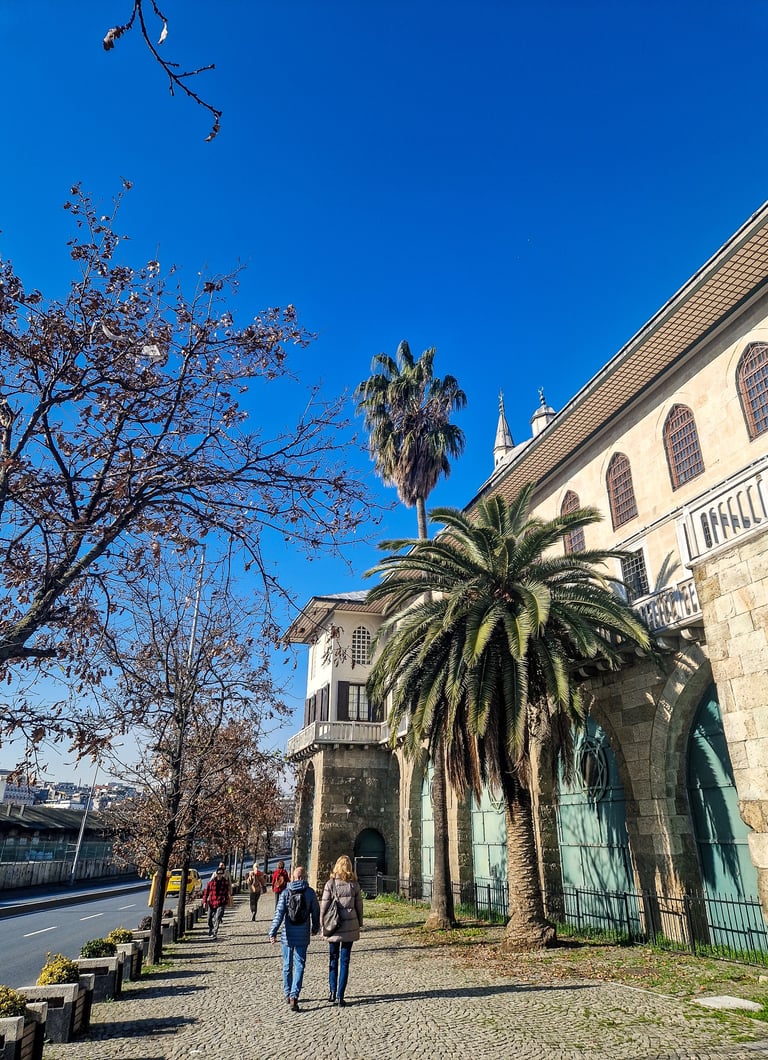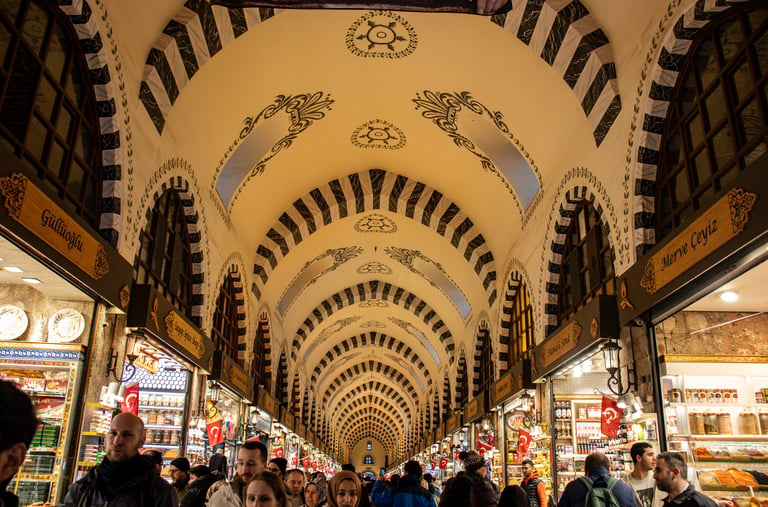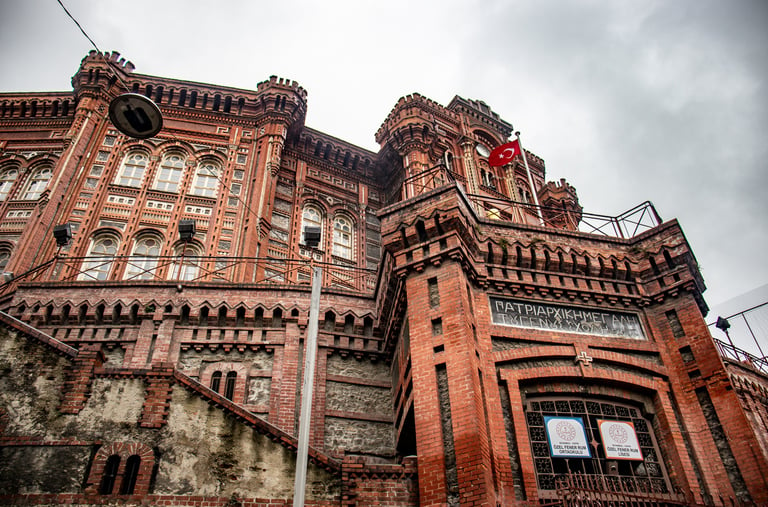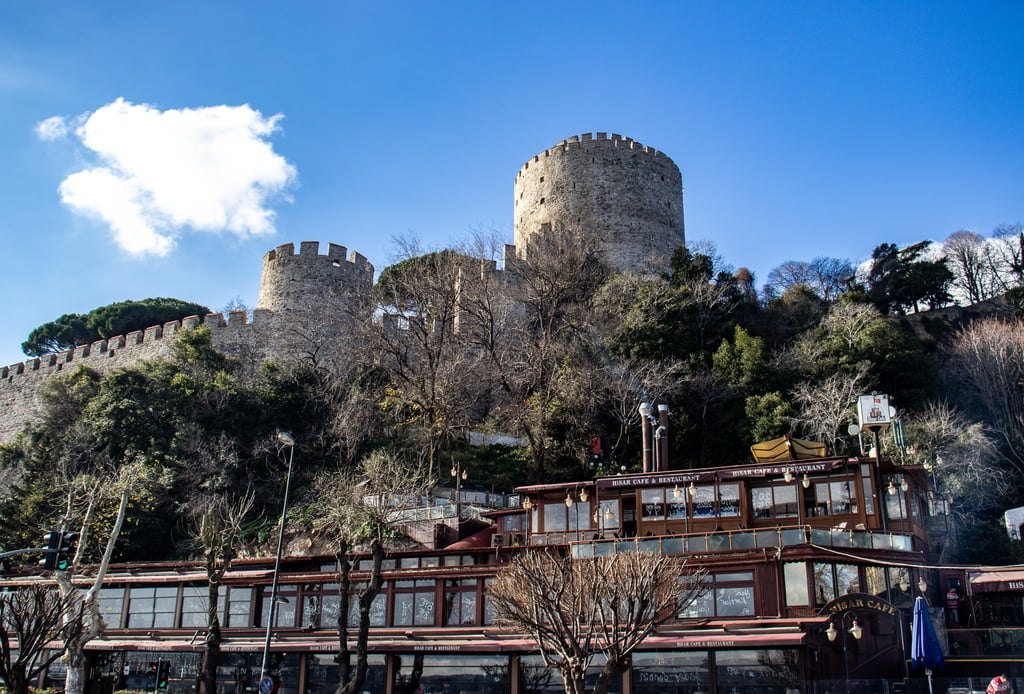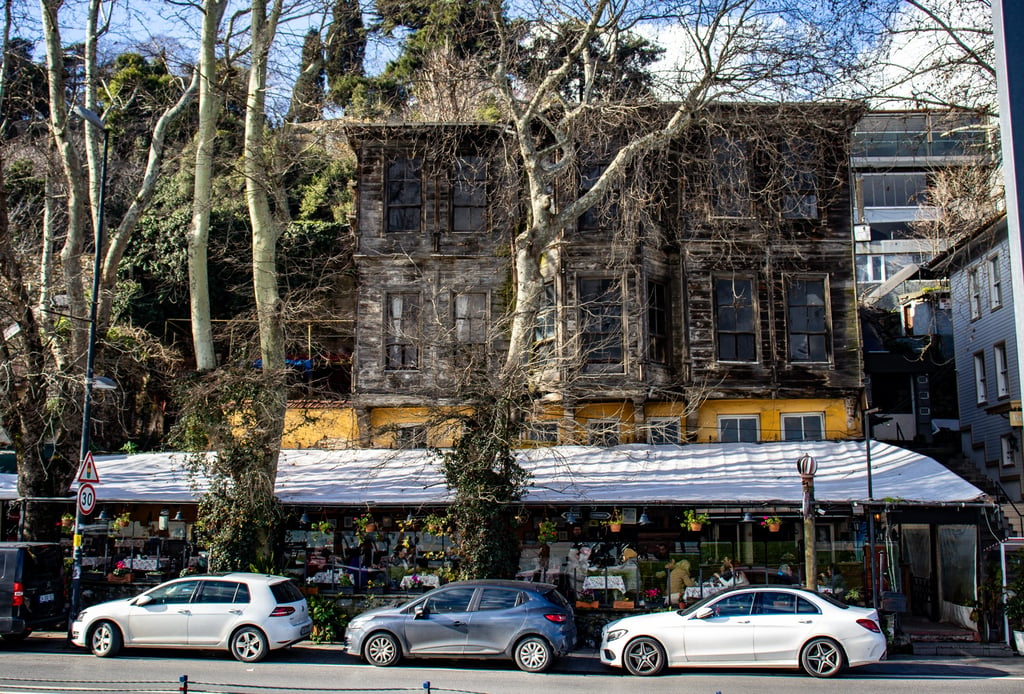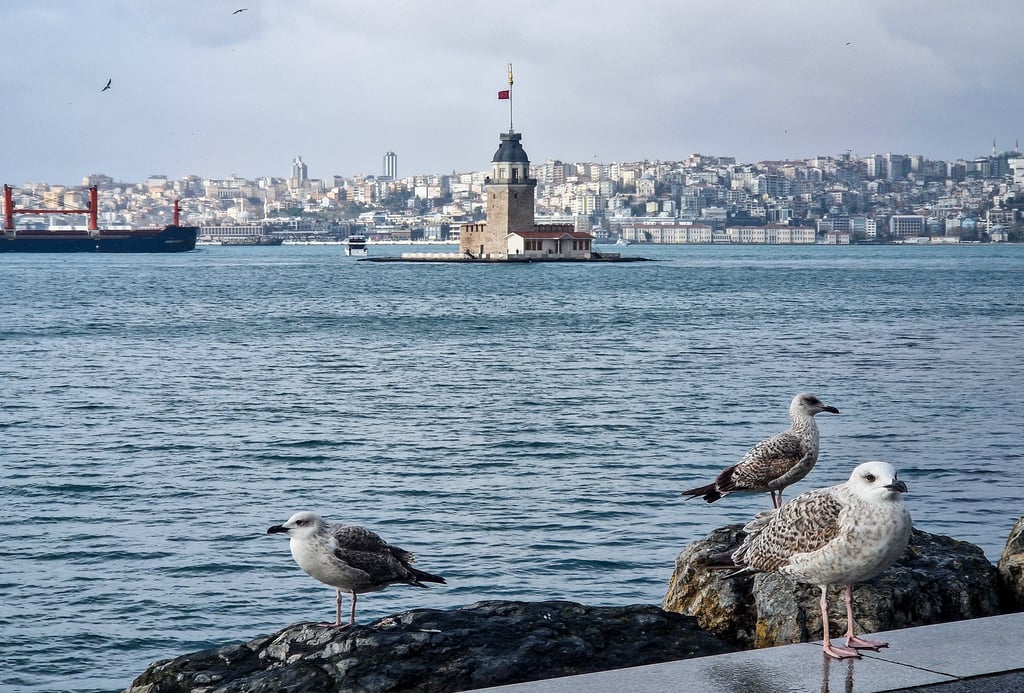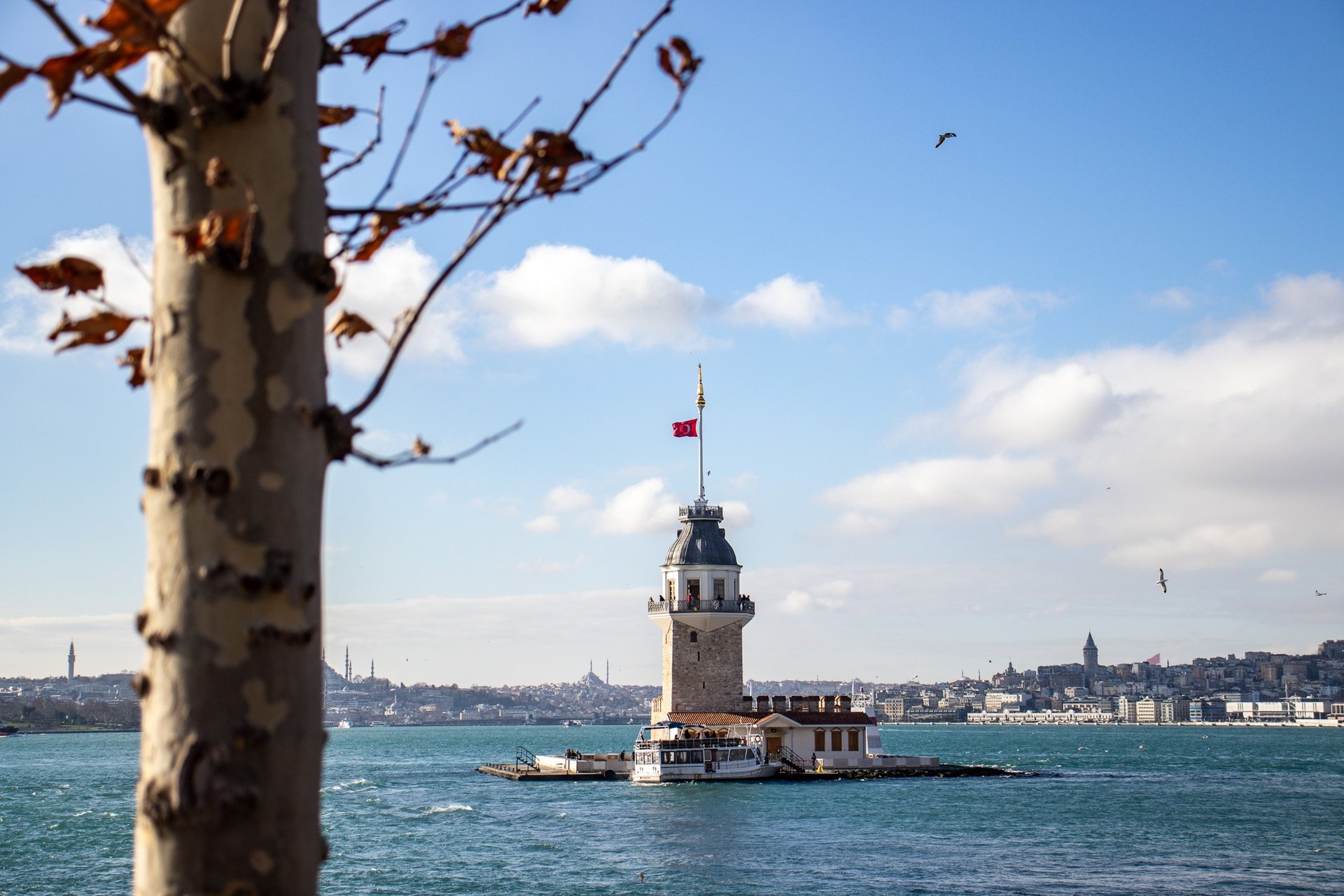
ISTANBUL
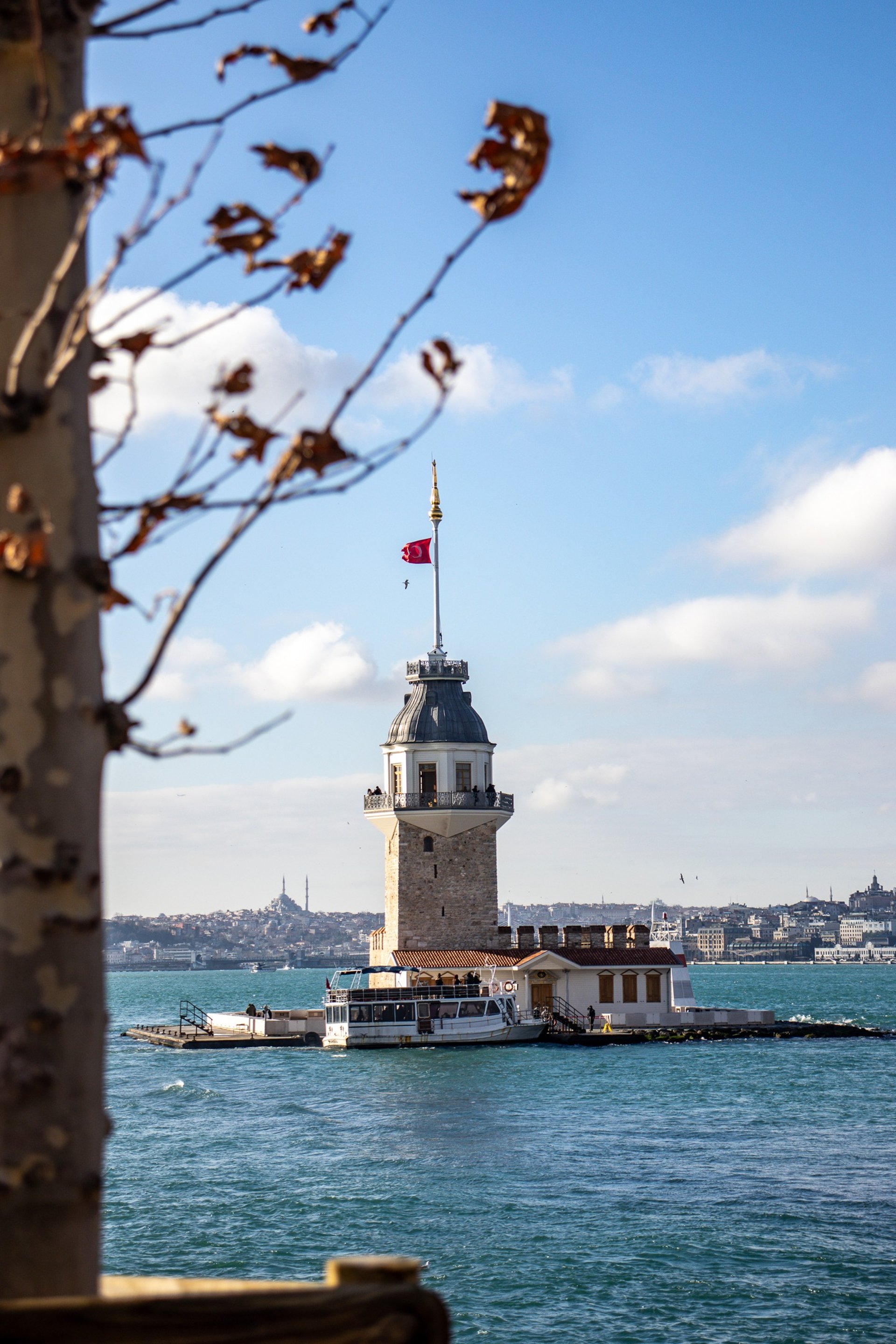
ISTANBUL
Istanbul sightseeing guide
Istanbul: the ancient gateway between Europe and the Middle East
Istanbul is a city like no other. Due to its many different rulers, it has a unique history that cannot be defined by a single era. Of course, the Ottoman influence stands out above all, but if you look closer, you will also see traces of the Byzantine Empire and even the Genoese (from Italy). Almost nowhere else has history merged so seamlessly with modern life as in Istanbul. Walking through the ancient streets of European Istanbul and along the shores of the Bosphorus, you can sense how this city has been a bridge between continents and cultures for centuries.
In this Istanbul city guide, we take you on a six-day journey along both the well-known and lesser-known attractions in the city, allowing you to fully experience its intrigue. We have divided the trip into three geographically logical sections, spread over six days. In case you plan on staying for a shorter time, you can also condense the itinerary into three days – just keep up the pace or skip some parts, suggestions for this are provided at the end. Whatever you do, don’t make the common mistake of skipping the Asian side of Istanbul.
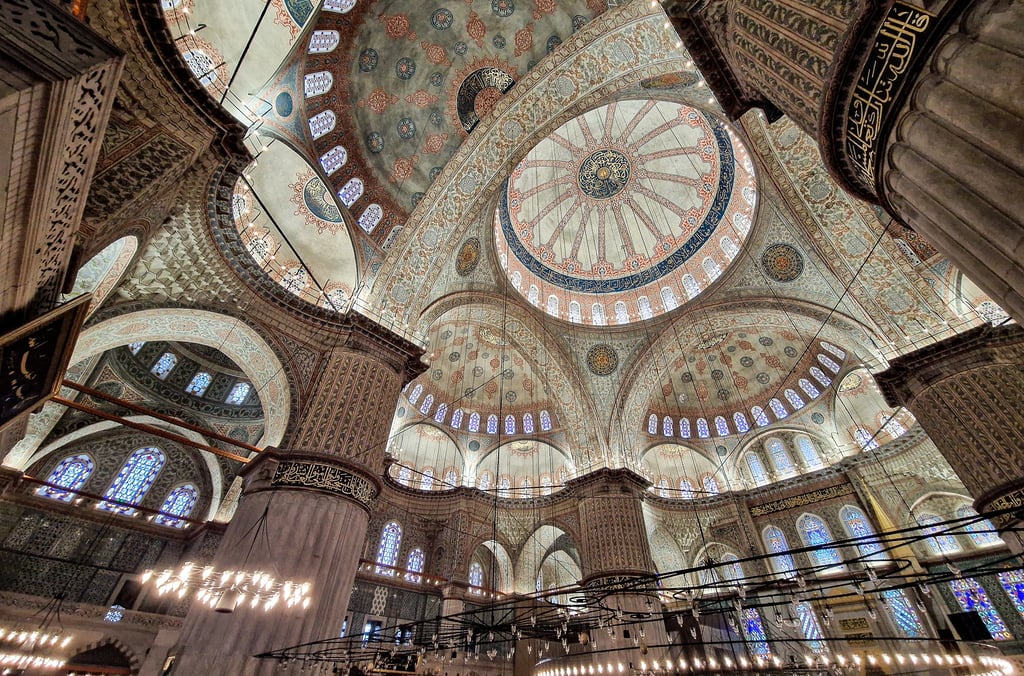

Table of contents
Day 1 & 2: Discover the rich history of European Istanbul
Mosques to visit
A glimpse into the life of a Sultan
Get overwhelmed by the bazaars and unwind with a traditional dance performance
Explore the colourful and mysterious Fener and Balat
Day 3 & 4: Explore the commercial heart of Istanbul
Climb the Galata Tower for the best view of the city
Join the shopping crowd in Karaköy and Taksim
Get a glimpse into the life of the Turkish elite in Arnavutköy and Aşiyan
Enjoy the sunset and the stunning architecture along the Bosphorus with a boat tour
Day 5 & 6: Experience a different side of Istanbul on the Asian Continent
Take the boat to the picturesque Maiden's Tower
Explore the lively and beautiful Üsküdar district
Immerse yourself with the locals in bustling Kadıköy
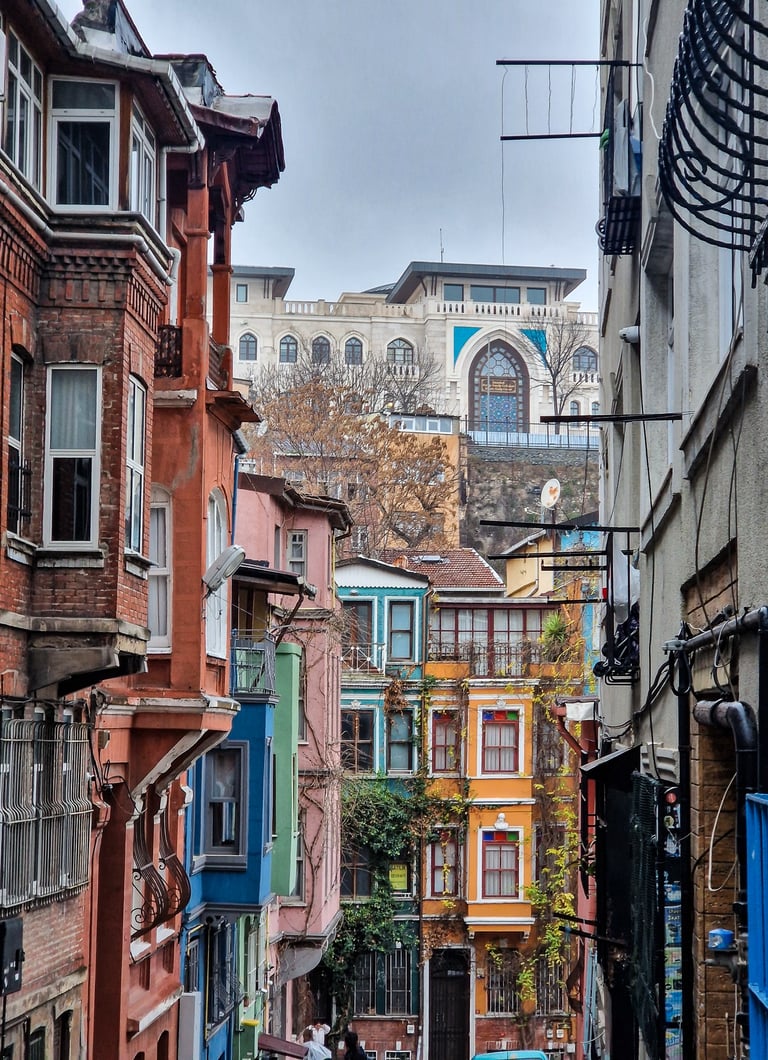

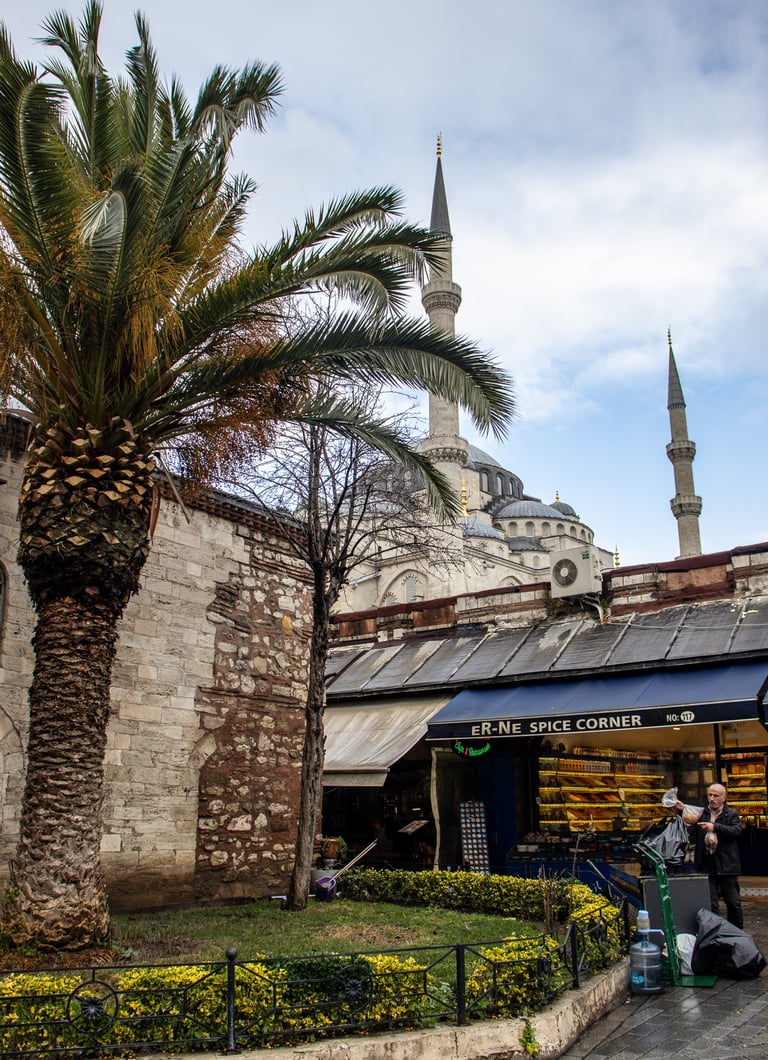

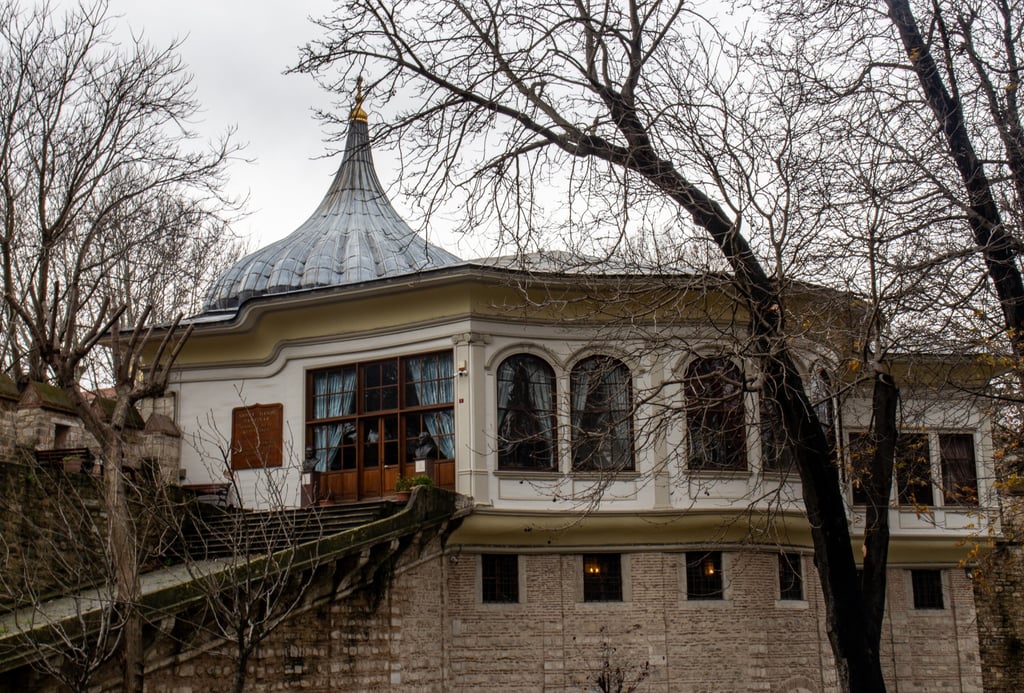

Days 1 & 2: Discover the rich history of European Istanbul
If this is your first time in Istanbul, you simply cannot skip starting in the “Golden Horn.” This is the southernmost part of Istanbul, whose shape, unsurprisingly, resembles a horn. The term “golden” is said to refer to the golden glow that the water often takes on in the sunlight. Historically, it is one of the most important areas of Istanbul – this is where the city has its origin. As a result, you will find most of the city's historic landmarks here, such as the Hagia Sophia, the Topkapı Palace, and the centuries-old bazaars. By starting your journey in the Golden Horn and admiring the powerful buildings from various historical periods, you will immediately understand why Napoleon once supposedly said that Istanbul (then Constantinople) was the capital of the world.
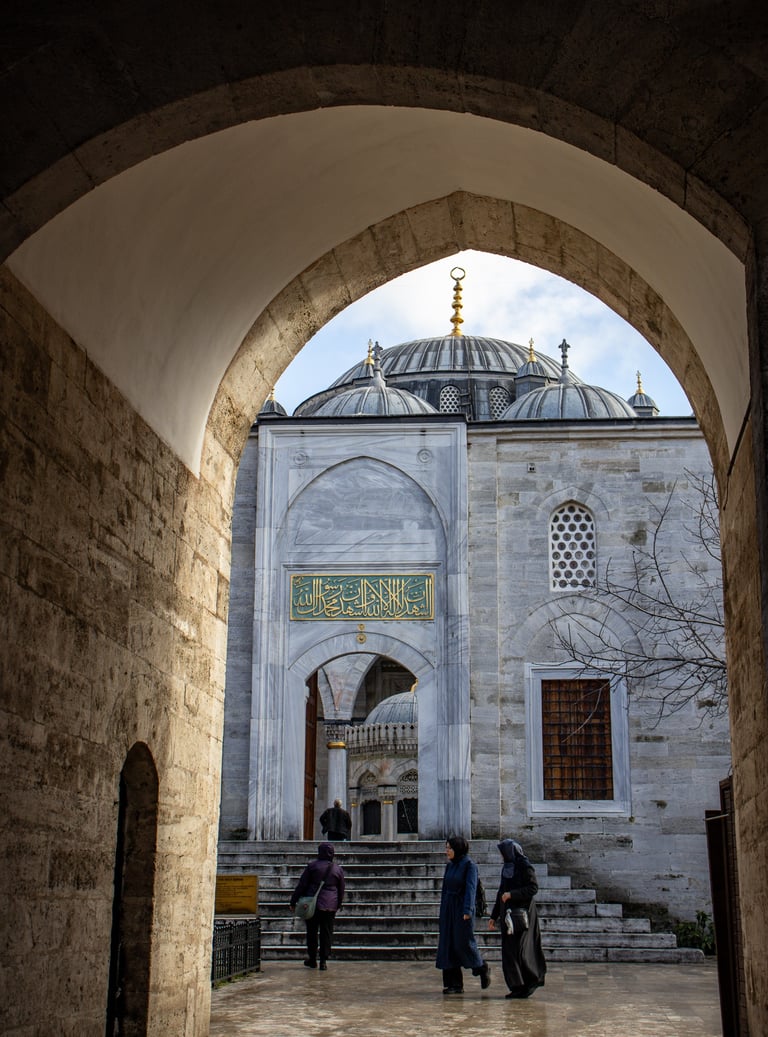

Mosques to visit
Nothing symbolizes Istanbul quite like its magnificent mosques, towering proudly above the city. Every district has at least one remarkable example. The most famous ones in the Golden Horn are the Hagia Sophia, the Blue Mosque, and the Yeni Mosque.
The Hagia Sophia was built in 537 AD by the Byzantine Emperor Justinian I as a Christian cathedral. For centuries, it was the largest church in the world. After the Ottoman conquest of Constantinople in 1453, it was converted into a mosque. This makes it a prime example of the literal fusion of East and West in Istanbul.
In 1935, Mustafa Kemal Atatürk (the founder of the Turkish Republic) transformed it into a museum, and in 2020, it was reconverted into a mosque. This marked a significant turning point in Turkey’s politics, as Atatürk – who remains widely admired – strongly believed in a secular Turkey, of which the museum conversion was a key part. President Erdoğan’s decision to turn it back into a mosque is therefore seen as a break from Turkey’s secularism. We’ll keep our opinions on that to ourselves, but from a tourist’s perspective, this change is not ideal: where you once had free access to the entire building, non-Muslims and non-Turks must now pay a staggering entrance fee of €25 and can only admire the mosque from the first floor.
While the Hagia Sophia’s exterior may not be particularly striking, we believe the Blue Mosque (officially called the Sultanahmet Mosque) is absolutely stunning. Despite its immense size, the 400-year-old mosque was completed in just seven years. The mosque is unique for its six minarets, a feature previously only seen at the Grand Mosque in Mecca. Its interior is adorned with more than 20,000 hand-painted Iznik tiles, primarily in shades of blue, which gave the mosque its famous nickname. Fortunately, tourists can visit this magnificent building for free, outside of prayer times and with appropriate clothing. Women must cover their heads – if you don’t have anything with you, don’t worry, headscarves are provided at the entrance.
The Yeni Mosque is lesser known than the previous two but it might be one of the most beautiful ones in Istanbul, from the outside at least. We haven’t been inside, as it seemed to function primarily as a place of worship. However, it is reportedly possible to visit. Its interior is also decorated with blue-and-white Iznik tiles, and its exterior features blue domes, making it easy to mistake for the Blue Mosque. What makes this mosque particularly special is its location right on the Bosphorus. It is especially striking in the evening when it is beautifully illuminated.
There are hundreds more mosques throughout Istanbul, from grand to modest in size, as every neighbourhood has one. If you’re looking for something truly unique, visit the modern mosque of the Faculty of Theology at Marmara University (İlahiyat Fakültesi) – an architectural gem!
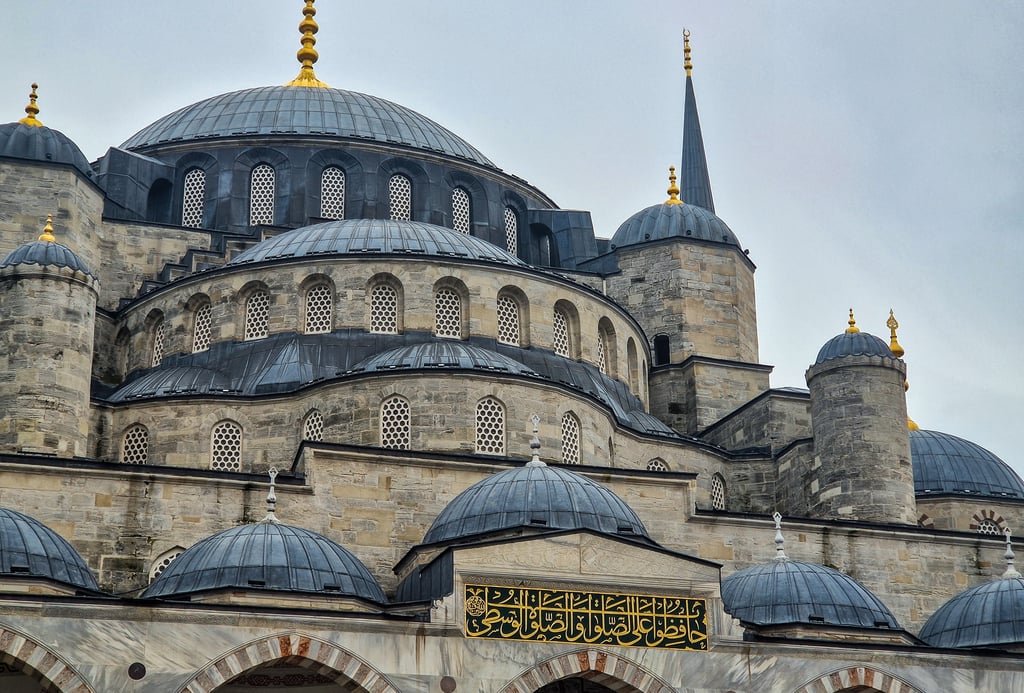

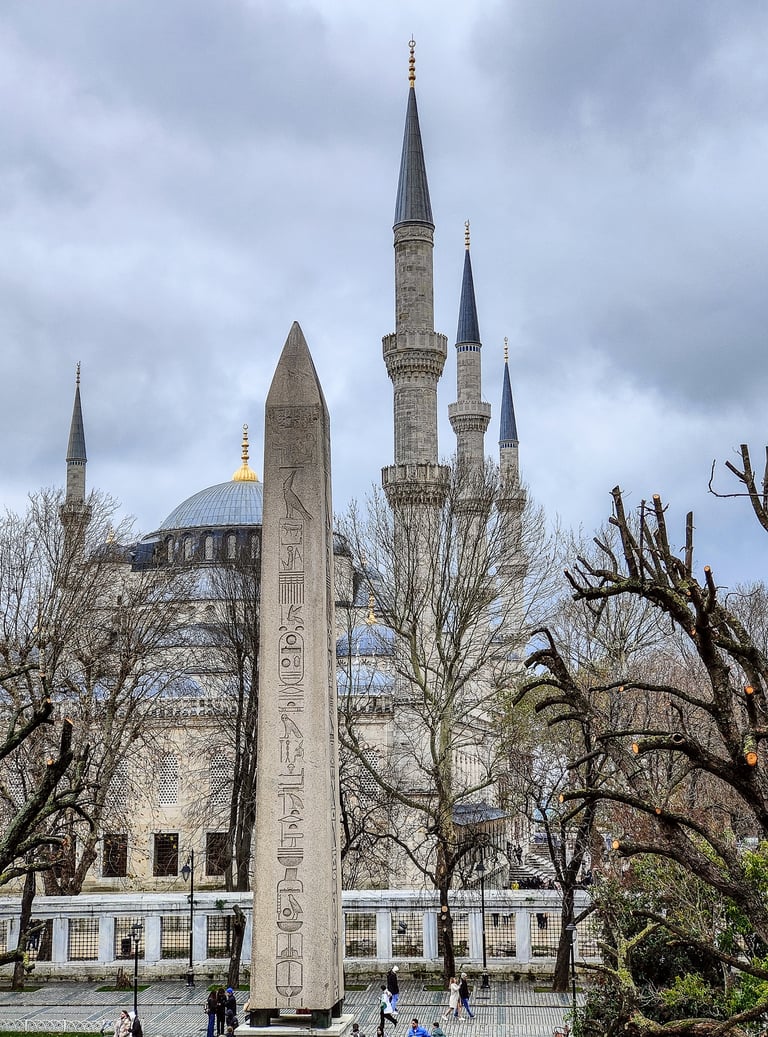

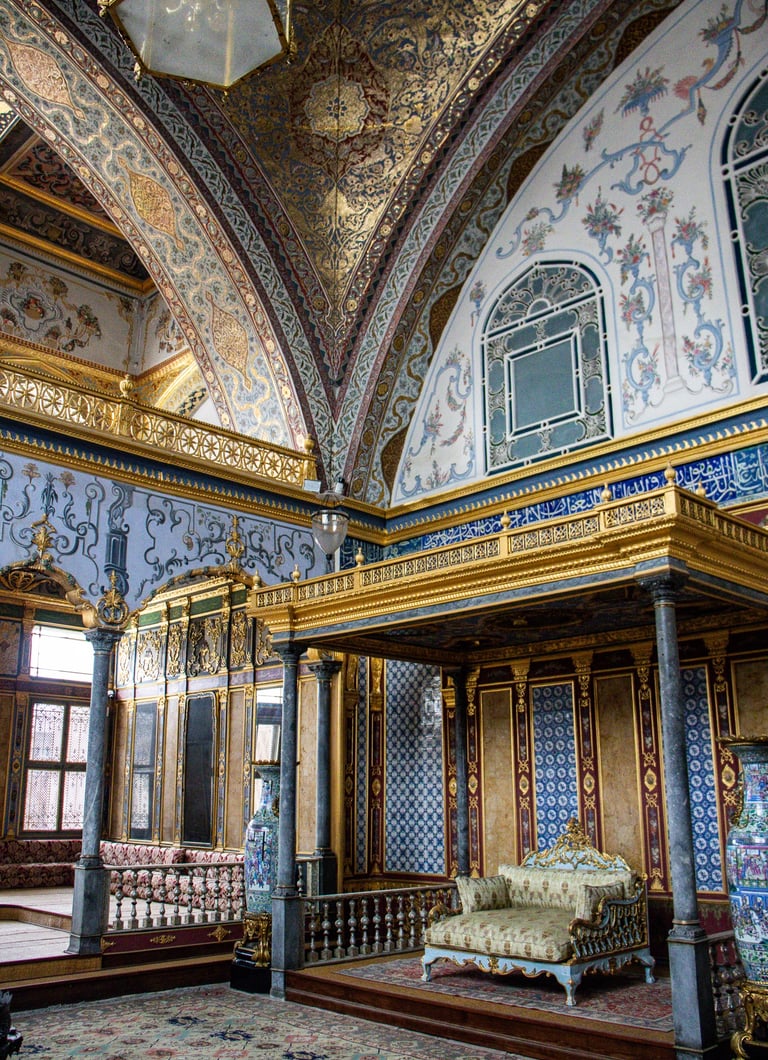

A glimpse into the life of a Sultan
The Topkapı Palace is one of the most impressive and historically significant palaces in the world. It served as the political and administrative centre of the Ottoman Empire and the residence of the Sultans for nearly 400 years. The palace was built in the 15th century, shortly after the conquest of Constantinople in 1453. It remained the official residence of the Ottoman sultans until 1856 when the lack of modern amenities led to the move to Dolmabahçe Palace. In 1924, Atatürk converted it into one of the first museums of the Turkish Republic.
The palace consists of four large courtyards and numerous buildings. Our favourites include the Imperial Council Hall, the Harem (a mysterious and secluded world where the sultan, his family, and concubines lived), the Treasury (home to stunning Ottoman jewels, swords, and the famous Topkapı Dagger), and the balcony with its breathtaking view of the Bosphorus. Particularly the Harem is an extensive and fascinating part of the palace – we spent a long time exploring it, learning much about this aspect of the sultanate, which we had previously only known from fairy tales. The palace is enormous and well worth a thorough visit, so set aside a few hours. You can enter with the Istanbul Museum Pass, which we’ll discuss in the practical information at the end.
A walk through the nearby Gülhane Park is highly recommended. You may also want to visit the Basilica Cistern (Yerebatan Sarnıcı), a vast underground water storage system from Byzantine times. It’s a remarkable site, though we found the €30 entrance fee a bit steep.
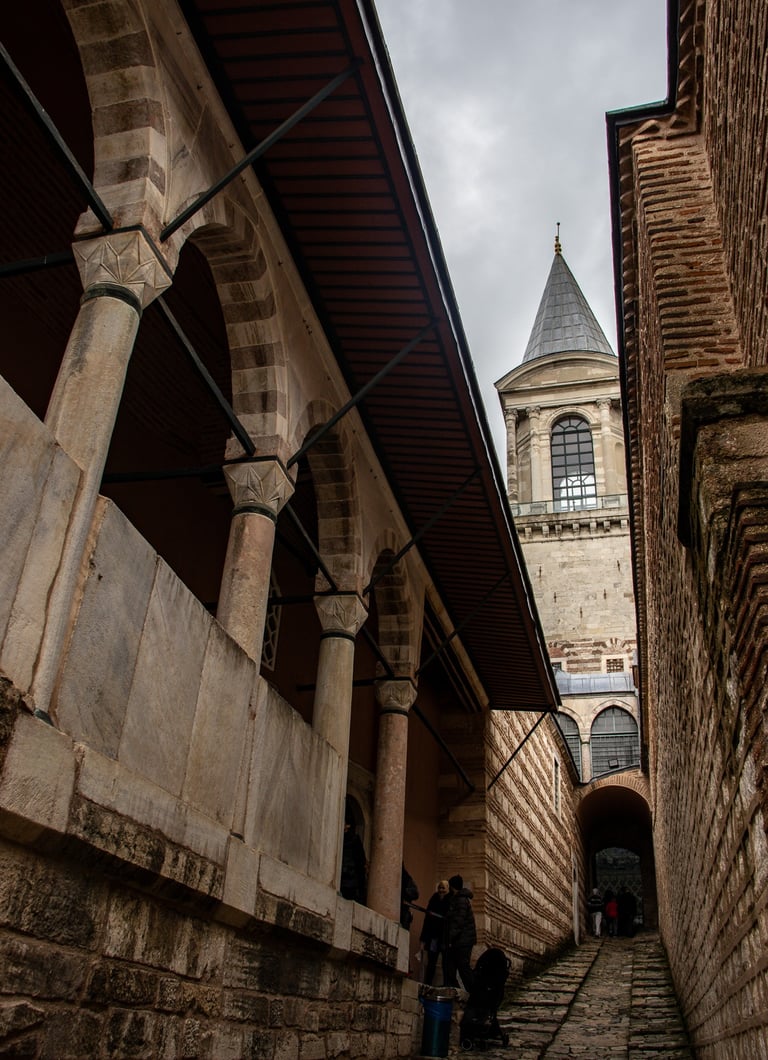

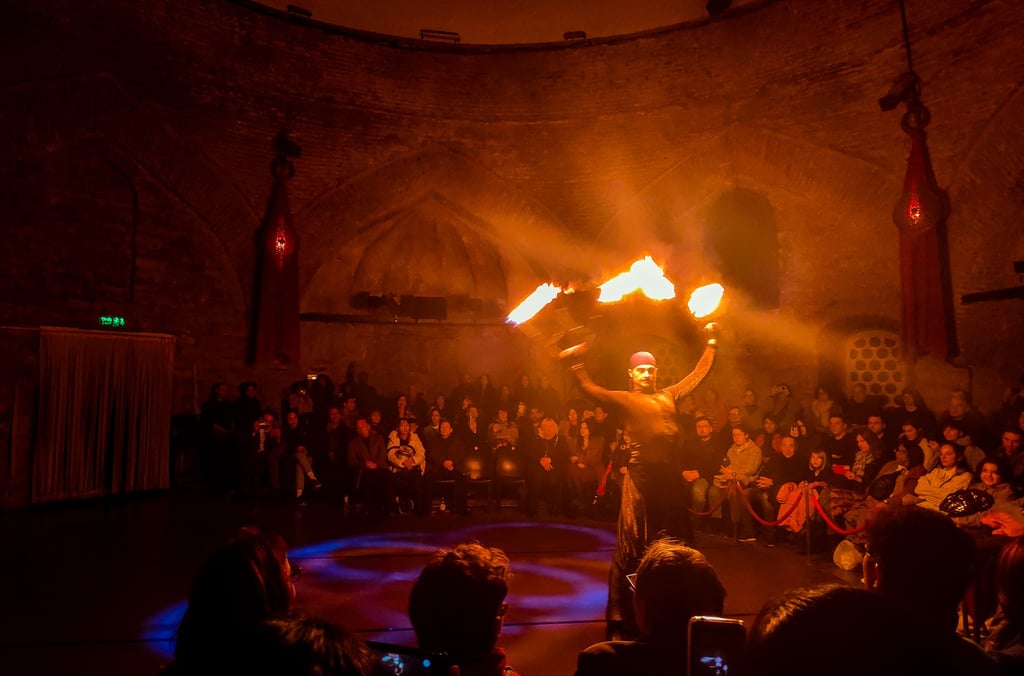

Get overwhelmed by the bazaars and unwind with a traditional performance
European Istanbul is home to several famous bazaars. While they can be quite touristy, they are hard to resist. The Grand Bazaar (Kapalı Çarşı) is the city’s oldest and largest bazaar. In fact, it is one of the biggest covered markets in the world, boasting a staggering 4,000 shops. You’ll find jewellery, carpets, ceramics, and antiques here. It’s a labyrinth of narrow streets, and the slightly pushy vendors can be overwhelming, but it remains a fascinating cultural experience.
The Egyptian Bazaar (Mısır Çarşısı) is much smaller but just as historic. Established in 1660, this market is housed in a beautiful building and is also known as the Spice Bazaar. You’ll mainly find a variety of delicious spices and treats here. It’s quite busy, but you can pass through quickly. If you’re looking for a quieter bazaar, check out the Arasta Bazaar, tucked behind the Blue Mosque. Here, you’ll find handcrafted carpets, ceramics, and jewellery. If you’re looking for a quality souvenir, this is your best bet.
After the chaos of the bazaars, you might want to relax with a performance. The best place for this is Hodjapasha, a cultural centre for traditional Turkish dance and whirling dervish shows, housed in a 15th-century Ottoman bathhouse. You might wonder – what the heck is a whirling dervish performance? It’s a spiritual and mesmerizing dance performed by the Mevlevi Sufi order (Sufi is a spiritual subdivision of Islam and Mevlevi is a specific branch within it), symbolizing the pursuit of enlightenment. While fascinating, we opted for the traditional Turkish dance show instead, as reviews suggested some viewers found the dervish performance rather sleep-inducing. The Turkish dance show features an energetic mix of folk dances, belly dancing, and Ottoman court dances. We highly recommend this cultural experience!
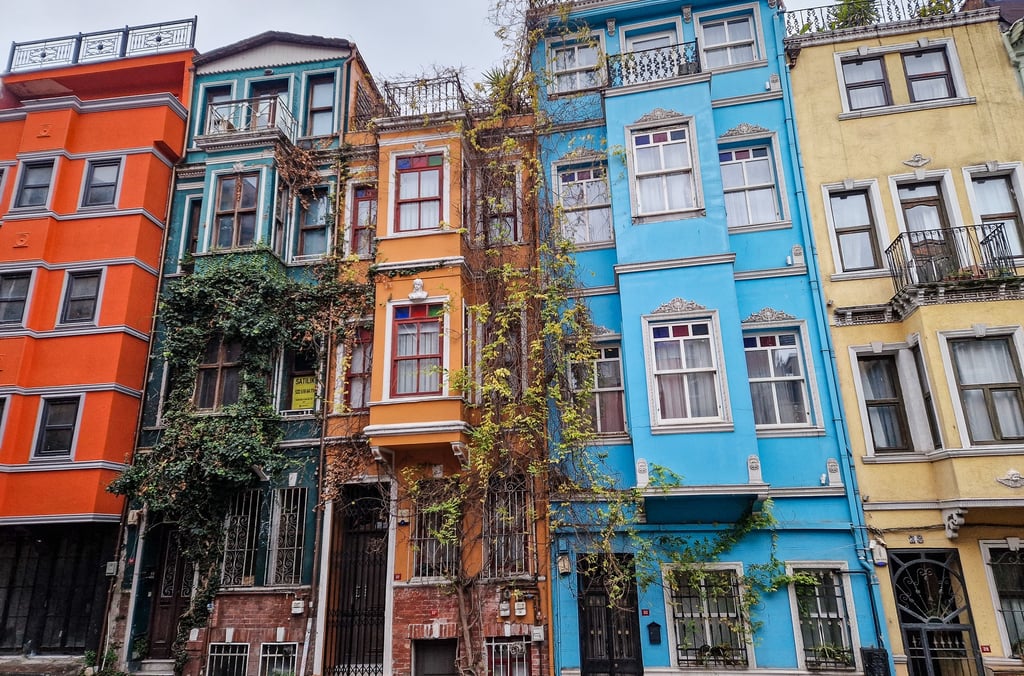

Explore the colourful and mysterious Fener and Balat districts
As you can tell, there’s plenty to see in European Istanbul. For a completely different experience, visit Fener and Balat, neighbourhoods known for their colourful streets and multicultural history. Fener was originally a Greek district, while Balat was home to Jewish and Armenian communities. This diverse background is still visible in the churches, synagogues, and historic houses. You’ll find beautifully preserved traditional architecture, with colourful partly wooden homes and charming narrow streets. Unfortunately, some buildings are in disrepair, so we hope restoration efforts will one day help preserve the area's unique character. Our highlight was the deep-orange-coloured Greek Orthodox High School, a particularly photogenic landmark.
These neighbourhoods are becoming increasingly popular with tourists and young locals. Therefore, you’ll find many cosy cafés, antique shops, and art galleries here. Unlike the Golden Horn’s tourist-heavy centre, this is a great area for authentic dining. We highly recommend a walking tour to uncover hidden gems, but if that’s not your thing, be sure to check out Balat Renkli Evler, Merdivenli Yokuş Evleri, and the historic Saint Stephen Orthodox Church.
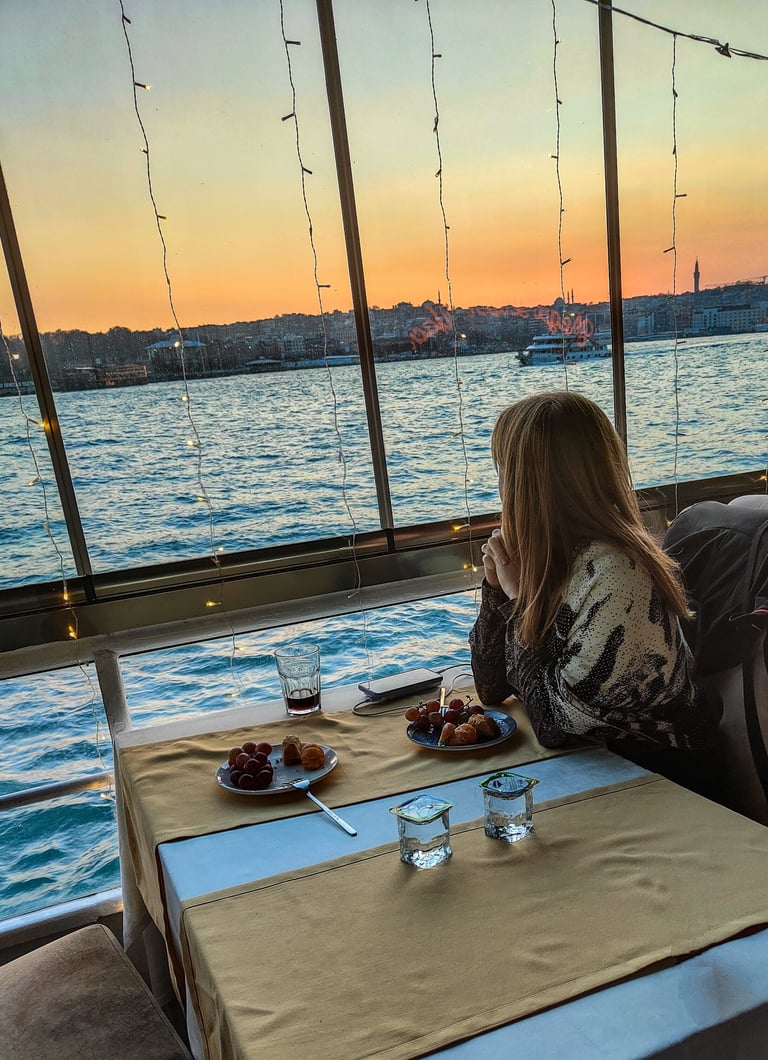

Day 3 & 4: Explore the commercial heart of Istanbul
After experiencing the history of the Golden Horn, it's time to explore the more modern and commercial part of European Istanbul. Start by taking a look at the Galata Bridge, which connects the two European sides of the city. From early morning until late at night, the bridge is filled with people fishing with long rods – a funny sight.
On the other side of the bridge, you immediately enter two of the most beloved neighbourhoods in this part of Istanbul: Galata and Karaköy. While Galata still holds some historical charm, Karaköy is newer than new and is practically one big shopping boulevard. A bit further, you’ll also find quieter districts that are great for a relaxed stroll. We’ll take you through the highlights.
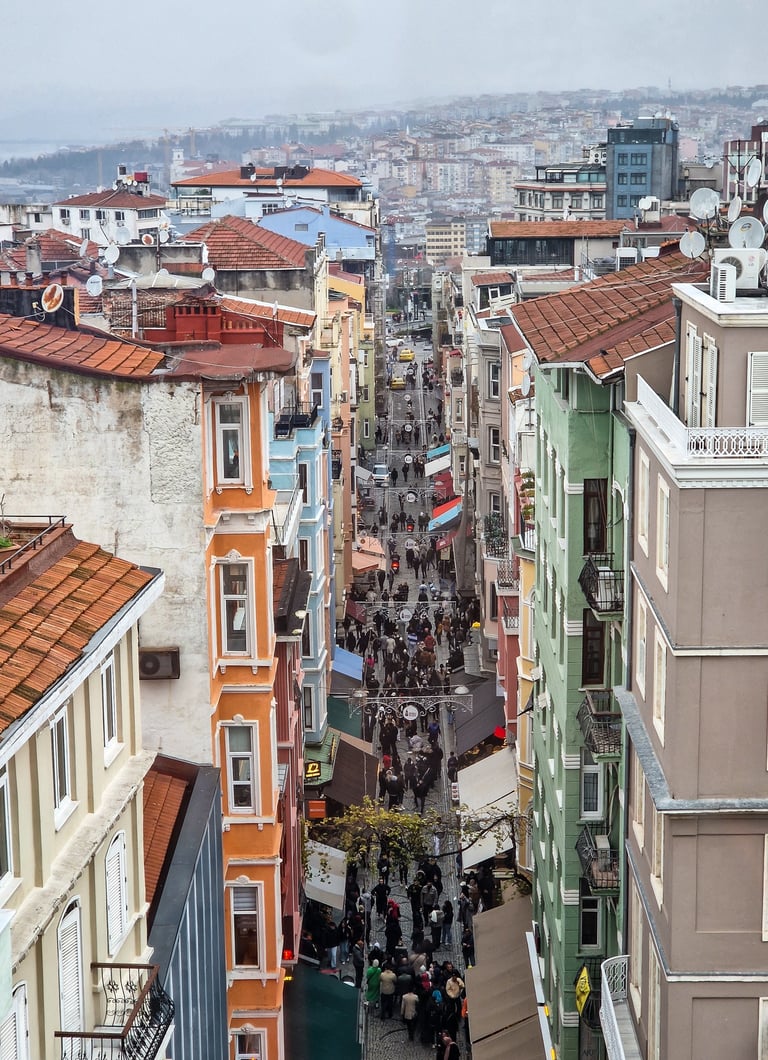

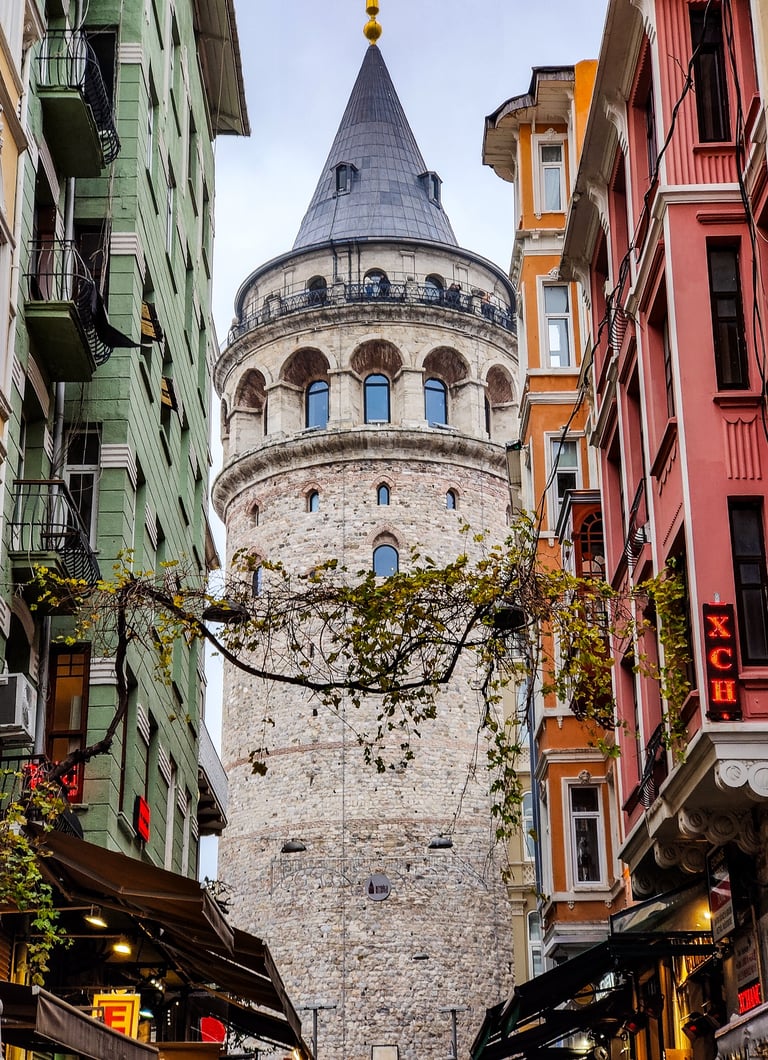

Climb the Galata Tower for the best view of the city
The Galata Tower is one of the most iconic structures in Istanbul, boasting an impressive history, breathtaking views, and a unique location in the lively Galata district. The tower was built in 1348 by a Genoese trading colony, which at the time had a fortified settlement in the Galata district. It served as a watchtower for the city walls. After the Ottoman conquest of Constantinople, the tower was used as a fire watchtower to detect fires in the city at an early stage. A rather peculiar fun fact: in the 17th century, an Ottoman inventor reportedly conducted a flight experiment by jumping from the tower with homemade wings and crossing the Bosphorus.
Today, the tower is primarily known as a photogenic landmark at the top of the Galata district, and at 67 meters high, it offers what may be the best view of the city. This tower is also accessible with the museum pass.
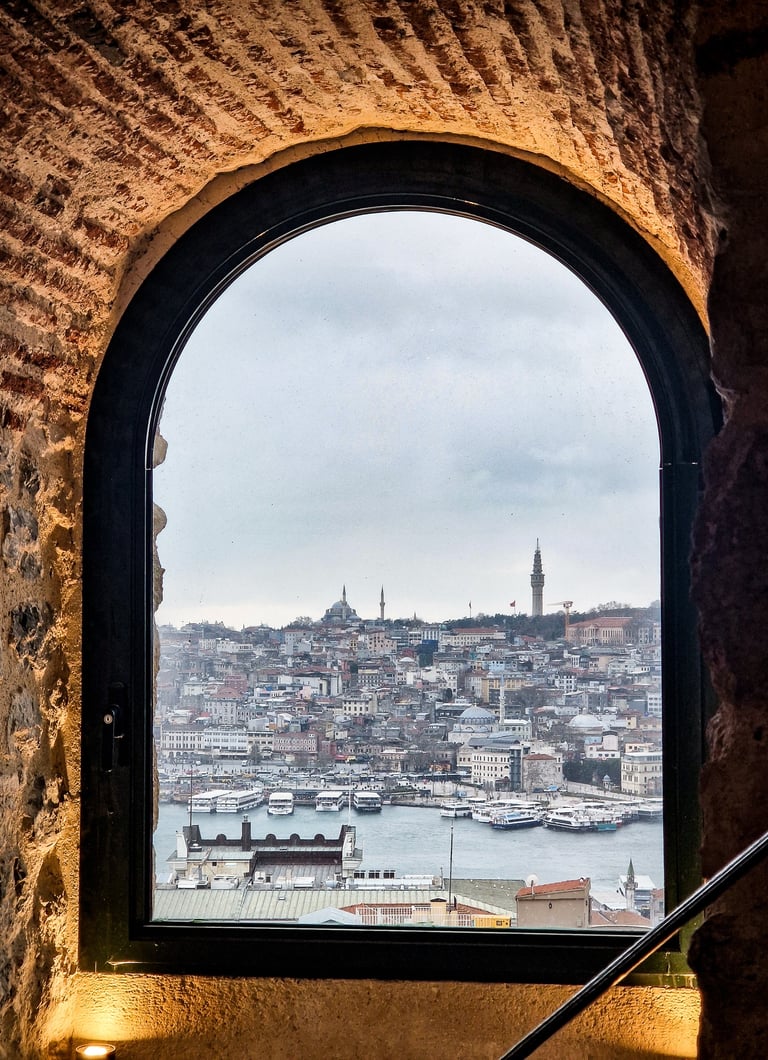

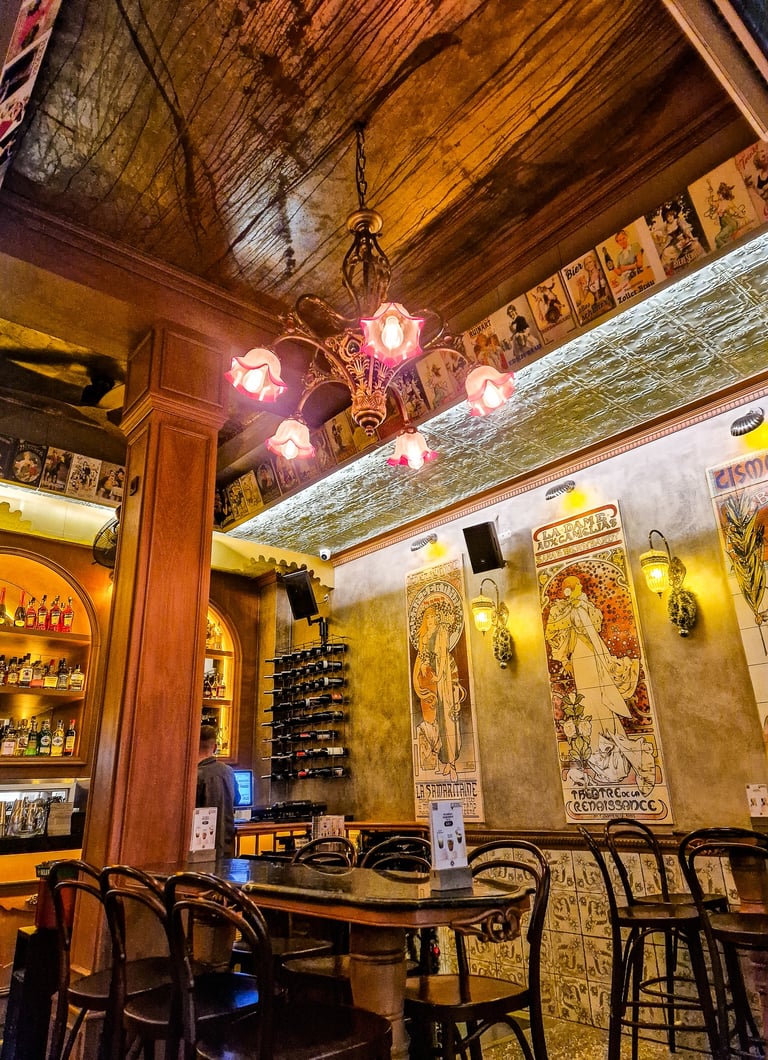

Join the shopping crowd in Karaköy and Taksim
For many people, a visit to Istanbul isn’t complete without some shopping. We must admit that we skipped this part, but we still explored these neighbourhoods. Taksim, and particularly Istiklal Cadessi, is the mainstream shopping heart of Istanbul. Here, you’ll find the large, well-known stores, but if you search well, you can also discover unique boutiques and vintage shops on the side streets.
Even amid the shopping frenzy, you can find interesting sights. Take a look at the beautiful Roman Catholic Santa Maria Draperis Church, which is hidden among the shops. The historic Çiçek Pasajı (a covered passage) is also worth a visit, and it’s a great place to sit down at a typical meyhane – a spot where you can enjoy mezze (Turkish appetizers) and raki (a strong anise-flavoured liquor).
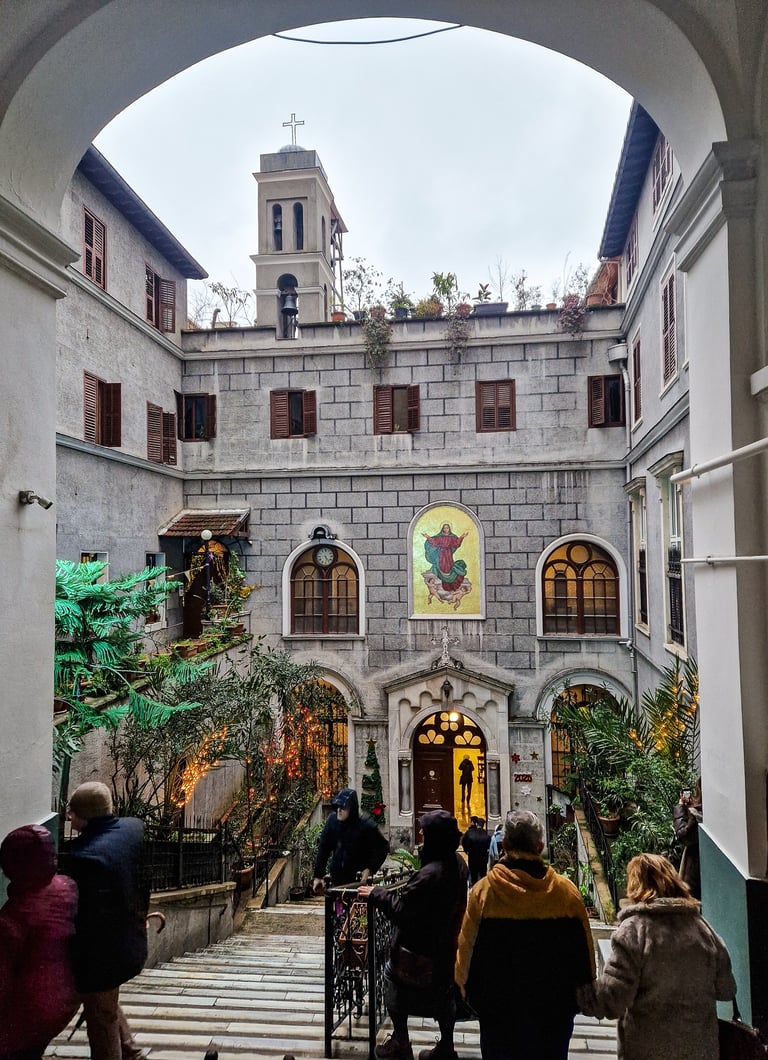

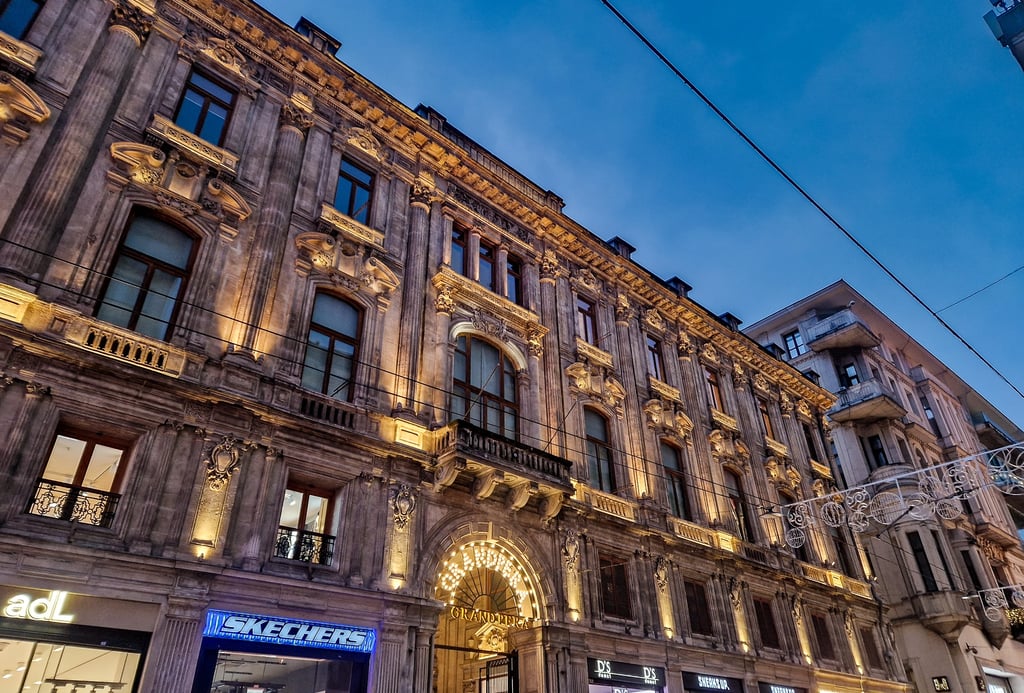

Although this district can feel overwhelming due to the crowds, there are plenty of charming spots to be found if you explore the side streets. If you’re looking for a drink, we highly recommend Sponeck Beerhouse, where they serve delicious locally brewed beers, wines, and snacks in a setting that feels like you’ve stepped into Paris.
Karaköy is generally much more modern and upscale. Nonetheless, on the side streets, you can still find charming bakeries, coffee shops, boutiques, and art galleries. The boulevard has recently been transformed into one large open-air shopping centre. You have to be into that kind of thing to really appreciate it – just like many urban Turks do. A very famous spot is the Turkish dessert restaurant Güllüoğlu. Many claim that they serve the absolute best baklava here and the reviews certainly support that.
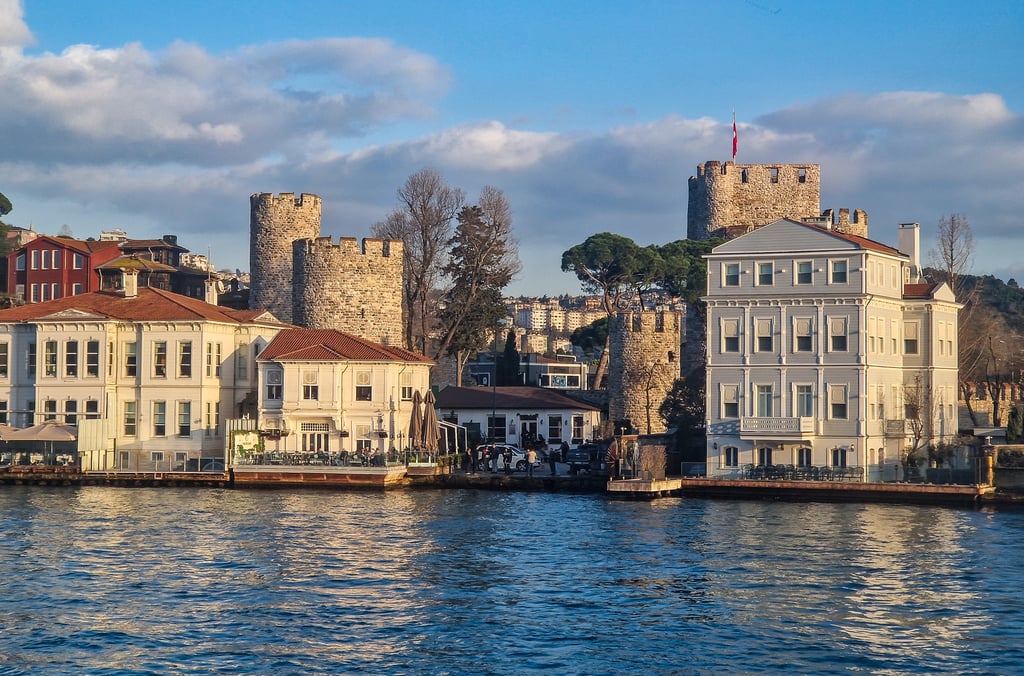

Enjoy the sunset and the stunning architecture along the Bosphorus with a boat tour
The Bosphorus is the lifeline of Istanbul. It has played a crucial role in history as a trade route and strategic hub. Without the Bosphorus, Istanbul would never have become the metropolis it is today. The fact that the Bosphorus has been cherished by its inhabitants for centuries is evident from the many magnificent structures adorning its shores, such as various palaces, mosques, and fortresses. A boat tour is the ultimate way to experience the beauty of Istanbul and admire its diverse neighbourhoods from a different perspective. Be sure to keep an eye out for last-minute deals – we managed to book a three-hour boat tour, including dinner, for just €25 per person.
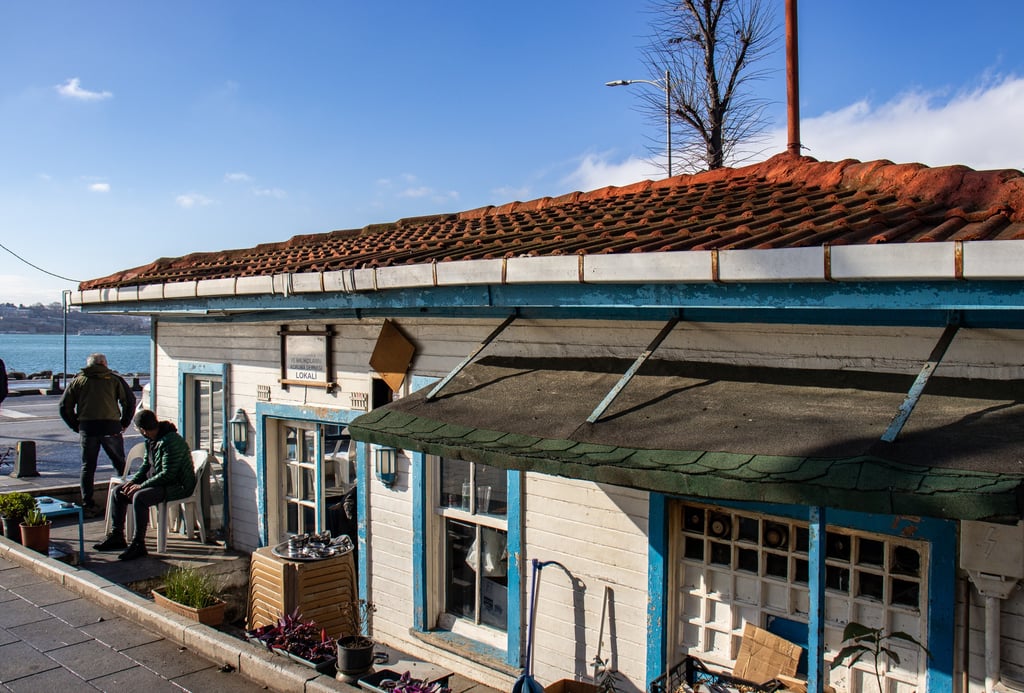

Day 5 & 6: Experience a different side of Istanbul on the Asian Continent
Your visit to Istanbul is not complete unless you’ve set foot on the Asian continent. The eastern side of the city has a completely different atmosphere and feels much less touristy to us. This may also be due to the lack of (well-known) tourist attractions. Nevertheless, there is still plenty to see and experience in this part of the city, such as the photogenic Üsküdar and the beautiful Fethipaşa City Park where you can escape the heat if necessary. Another added benefit of the lack of mass tourism is that the prices in the restaurants here are much lower, and the quality is much better. So, if you're looking for delicious and authentic food, this is the place to be!
Take the boat to the picturesque Maiden’s Tower
The Maiden’s Tower or Kız Kulesi, is a unique tower on a small island in the Bosphorus, just off the coast of Üsküdar. It is one of the most iconic landmarks of the city. There are several legends and tragic love stories about the tower, but its construction and use were primarily functional. The tower was built during the Byzantine era as a watchtower and small fort. During the Ottoman period, it was used as a lighthouse, prison, and even as a quarantine station during epidemics. The tower has recently been fully restored and is now open as a museum. It even has a small café. The location is particularly photogenic and offers a great view of the Bosphorus and the surrounding neighbourhoods. It is therefore a favourite among tourists, including ourselves.
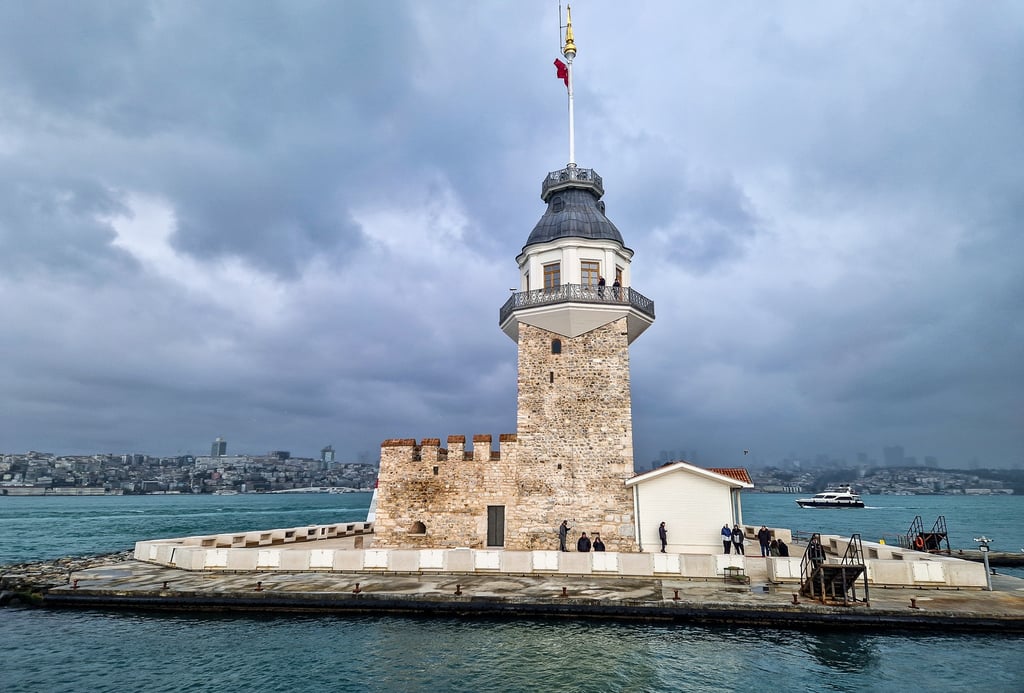

The tower is included in the museum pass, but you must pay an additional 5 euros per person for the ferry to the location. You can find the ferry location by searching for ‘Maiden's Tower Ticket Booth’ on Google Maps. Departure times are unfortunately subject to the captain's whims, so you’ll only get notified of them at the ticket counter.
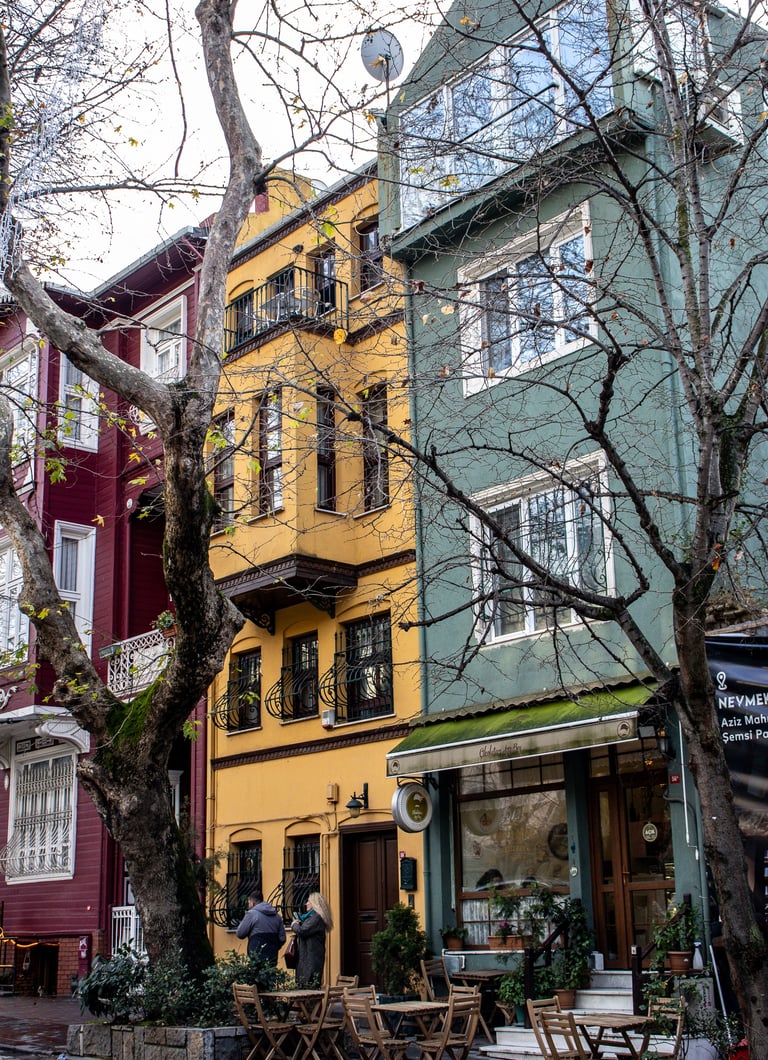

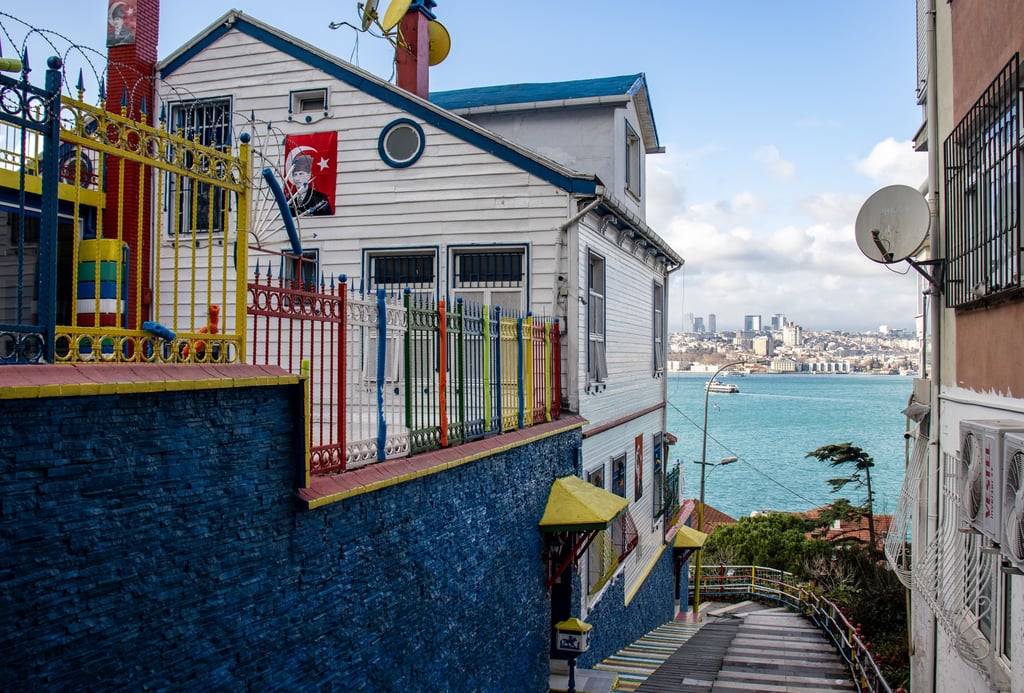

Explore the lively and beautiful Üsküdar district
Don’t take the same boat back from Kız Kulesi but instead board the boat that will drop you off in the Üsküdar district within a few minutes. This way, you can directly explore the Asian side of Istanbul. The area around the metro station could be considered the centre of the district. It is very lively here, and you’ll immediately notice that you’ve arrived in a less touristy part of the city. Why? Because you can eat much cheaper and more authentically here!
If you're in the mood for something sweet, stop by Hafiz Mustafa 1864, a very popular spot for Baklava and other Turkish delights such as the special sweet cheese dessert Künefe. Another delicious dessert is Halva, made from semolina, which is best enjoyed at a Helvaci Ali. Also, make sure to find a place to try Iskender döner, a dish consisting of layers of roasted meat, bread and a spiced tomato sauce. If you're looking for something else, you’ll find the great Lebanese restaurant Arada Blue City a little further along. Just a stone’s throw away is Kaftan Sokak, a particularly colourful street with a beautiful view of the Bosphorus.
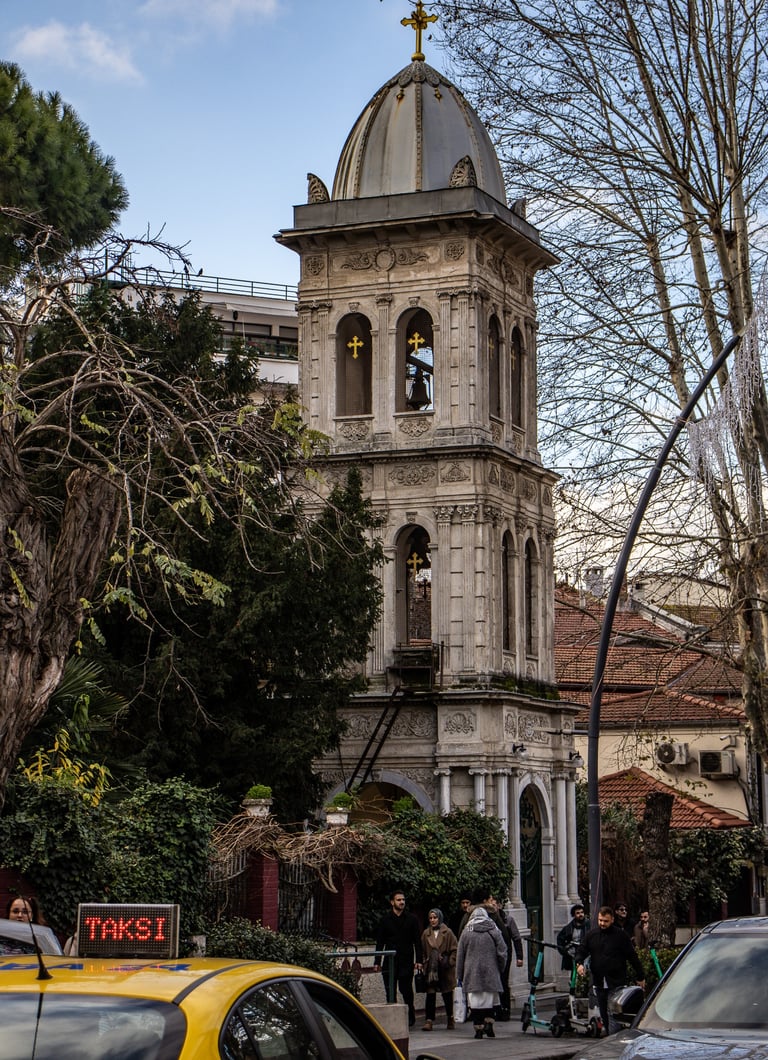

Then take the bus or challenge your legs by walking along the beautiful promenade and then taking the route through the lovely city park (Fethipaşa Korusu). We’ve hardly ever seen such a well-maintained city park. You’ll also find walkways with beautiful viewpoints (tagged as Seyir Köprüsü on Google Maps). It’s not necessarily a must-see, but if you have the time and energy, it’s definitely a nice detour.
Right next to the park, you’ll find a beloved street in Üsküdar called Icadiye Cadessi. This may be the most photogenic part of Istanbul. Here, you won’t find high-rise buildings, only charming old houses with colourful wooden bay windows in typical Ottoman style (marked as Kuzguncuk Evleri on Google Maps). Every street corner has something beautiful to see, and it’s a treat for (hobby) photographers. It’s also bursting with cosy cafés offering the tastiest sweets. Since Turks mostly don’t drink alcohol, there’s no afternoon/night drinking culture, instead groups of friends gather from early morning until late evening to hang out in the cafés.
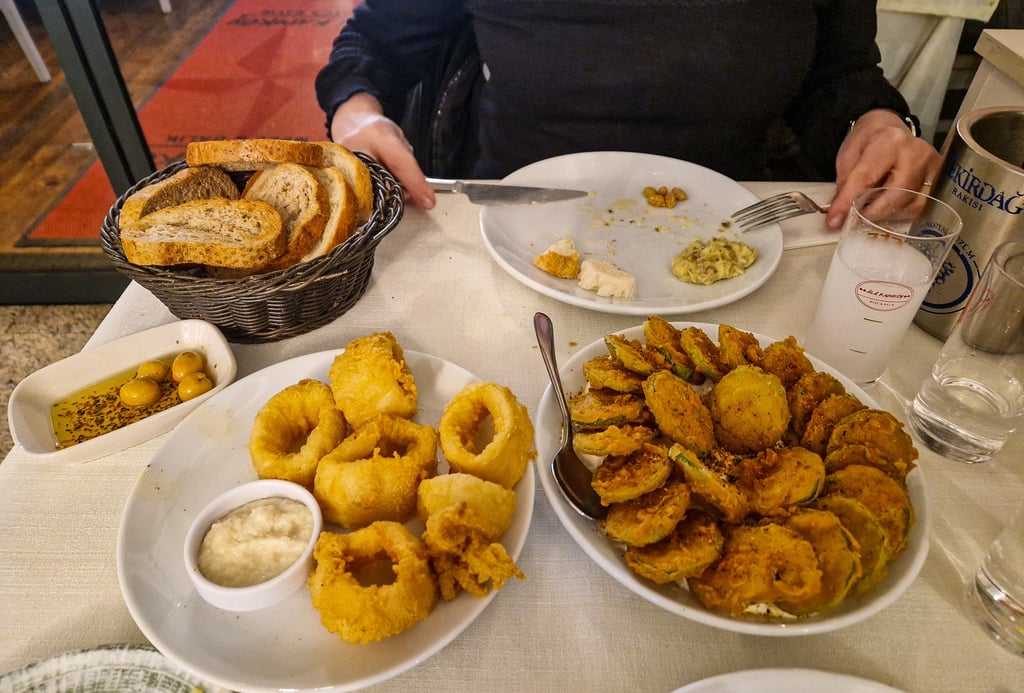

Immerse yourself with the locals in bustling Kadıköy
Next, you can end your adventure on the Asian side of Istanbul by travelling to the lesser-known but still very vibrant Kadıköy district. It’s clear that the residents of Istanbul love to go shopping and dining here in the evenings. The streets are full of cosy restaurants. The commercial centre is also intertwined with a market, which is fun to stroll through. A great authentic experience is to eat mezze and drink raki at Ala Kadıköy Meyhane, where you're served by sharply dressed waiters and mainly sit among older male friend groups, which makes it a rather funny experience.
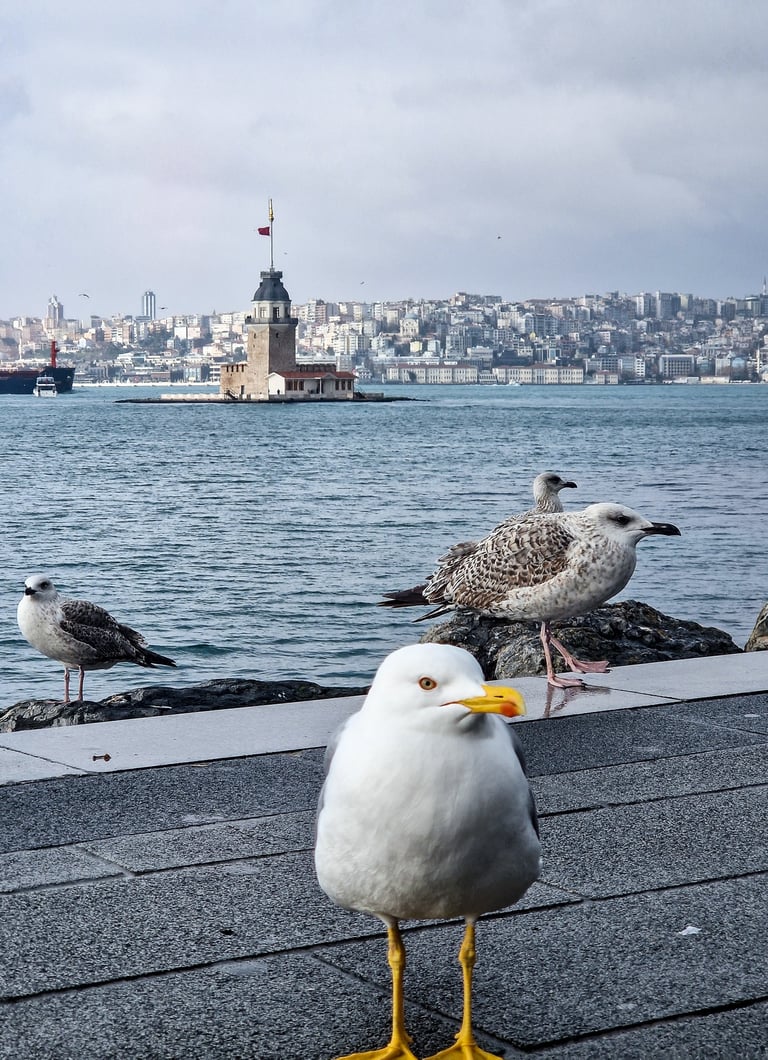

Our favourites in just three days
In case you have less time on your hands for exploring Istanbul, these are our favourites in just three days:
Day 1: Discover the rich history of European Istanbul
The Blue Mosque
Topkapı Palace
Fener and Balat
Day 2: Explore the commercial heart of Istanbul
The Galata Tower and Galata neighbourhood
Arnavutköy and Aşiyan
A boat tour on the Bosphorus
Day 3: Experience a different side of Istanbul on the Asian Continent
Maiden's Tower
Üsküdar (Kuzguncuk Evleri)
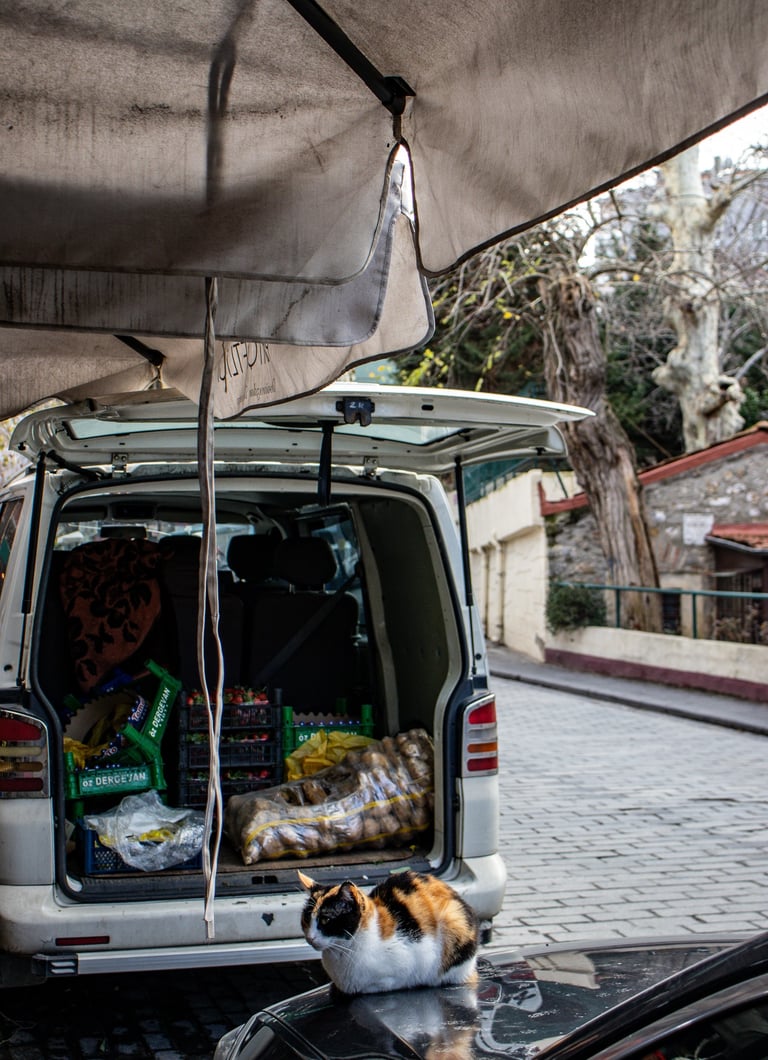

Practical information
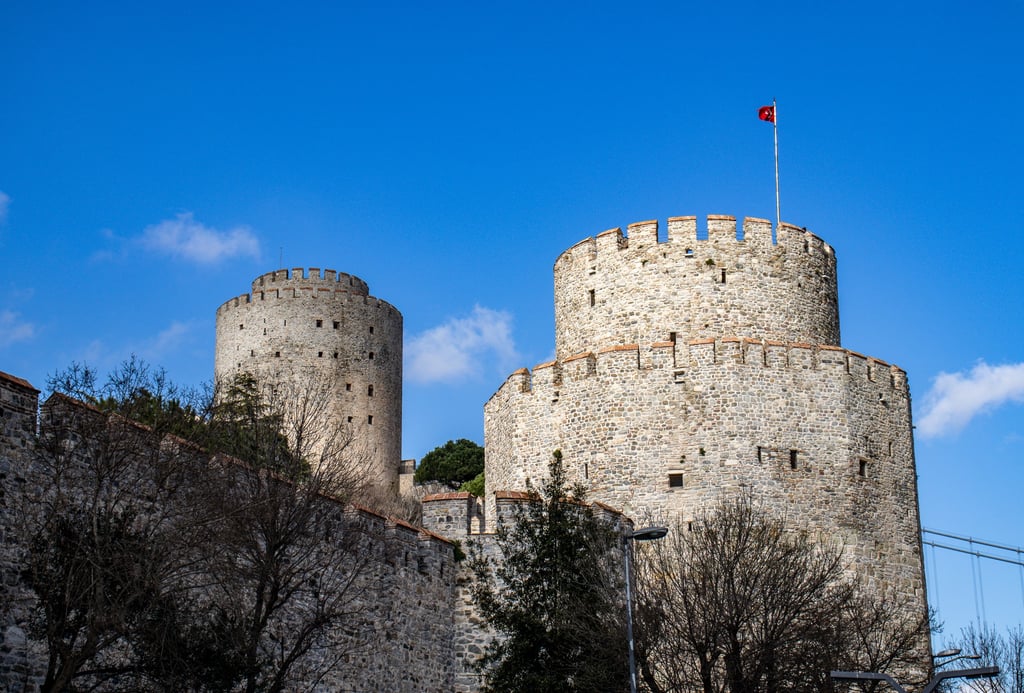

Tickets for attractions
Attractions in Istanbul can be quite expensive and, in our opinion, not always worth the price. However, visiting these attractions is the ultimate way to get a good sense of Istanbul's history and culture. Therefore, we recommend purchasing a Museum Pass, which can be ordered online. This e-ticket costs €105 and is valid for five days from its first use. With the pass, you can access the following (notable) museums:
Galata Tower and Museum (separate entry €30)
Museum of Turkish and Islamic Arts
Great Palace Mosaics Museums (we didn’t visit as it was closed for renovation)
Archaeological Museum (we didn’t visit, but it’s said to be worth it!)
Topkapi Palace (separate entry €54)
Kız Kulesi (Maiden’s Tower, separate entry €30)
Rumeli Fortress Museum (we didn’t visit as it was closed for renovation)
The three bolded attractions were the most interesting to us, which is why we mention them in the guide. In total, the entry fees for these amount to around €111, so if you only go to these, the total discount is just 6 euros per pass. There is also a so-called Megapass that includes even more tourist attractions, but in our opinion, the claimed savings with this pass are vastly exaggerated.
Public transportation
Public transportation in Istanbul is excellent, with metros, buses, trams, and ferries all operating with the same public transport card. In many cases, it’s possible to check in with your bank card, but since this isn’t the case for the Marmaray train (which connects the European side to the Asian side via an underwater tunnel), and the price of the public transport card is slightly cheaper, we would still recommend purchasing an Istanbulkart. You can buy one right upon arrival at the airport at the ticket machines. The card costs around 130 Turkish Lira, and you can top it up each time (with your bank card) up to a maximum of 200 Turkish Lira (which, in our opinion, is an unreasonably low amount…). A single ride costs 27 Lira (less than one euro) on average. The handy thing about the card is that you can travel with up to 5 passengers at once – just wait a few seconds when checking in before holding the card against the check-in gate again.
Since a ride, regardless of its duration, costs about 27 Lira, we highly recommend using public transportation instead of taking a taxi to and from the airport. The latter is much more expensive and not always faster due to the heavy traffic in the city. Be aware that there are two airports (SAW and IST) and one old airport (Ataturk) still listed on the public transport boards, so it’s easy to make a mistake. Sabiha Gökçen Airport (SAW) is smaller and located on the east side of the city, while the international airport (IST) is a major hub and located on the northwest side of the city. Depending on where you are in the city, you may need to book a special airport bus to the last airport, which can be done at the designated bus stops. We found this to be a very relaxed way to get to the airport.
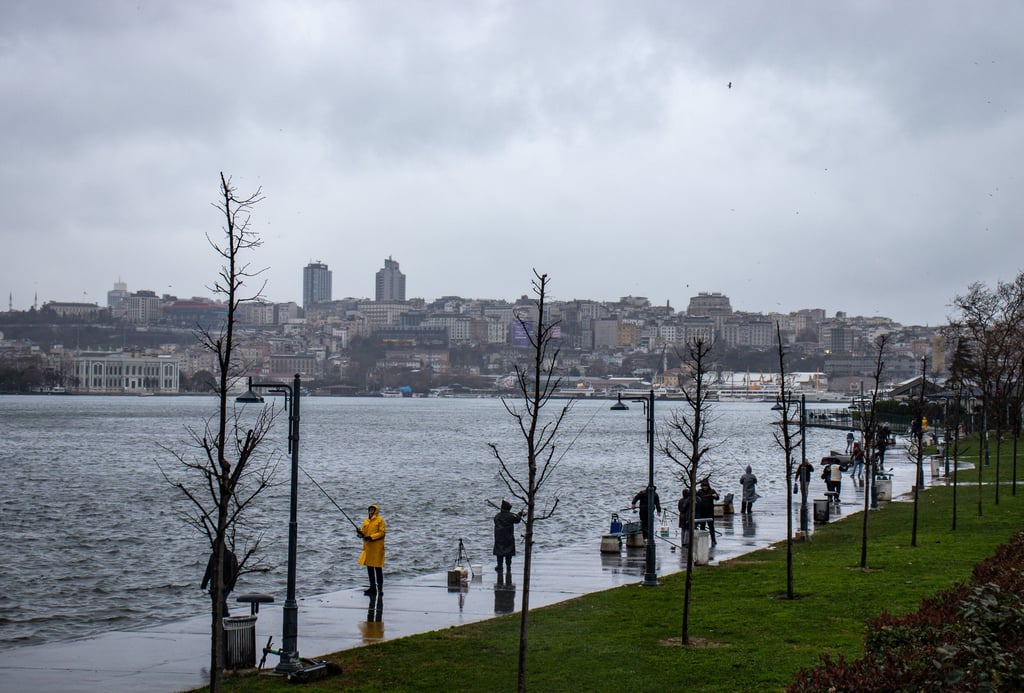

Best time to visit
Istanbul is great to visit year-round, but especially in the spring (April – early June) and autumn (September – early November), the temperatures are, in our opinion, most ideal for a city trip (averaging between 15 and 25 degrees). Unfortunately, Istanbul is almost always busy. Due to its favourable location, it attracts tourists from all over the world. Furthermore, it is a sprawling city, so it’s already somewhat bursting with its residents. Nonetheless, it’s worth considering holidays and vacation periods. The quietest months with reasonably good weather are April and October.
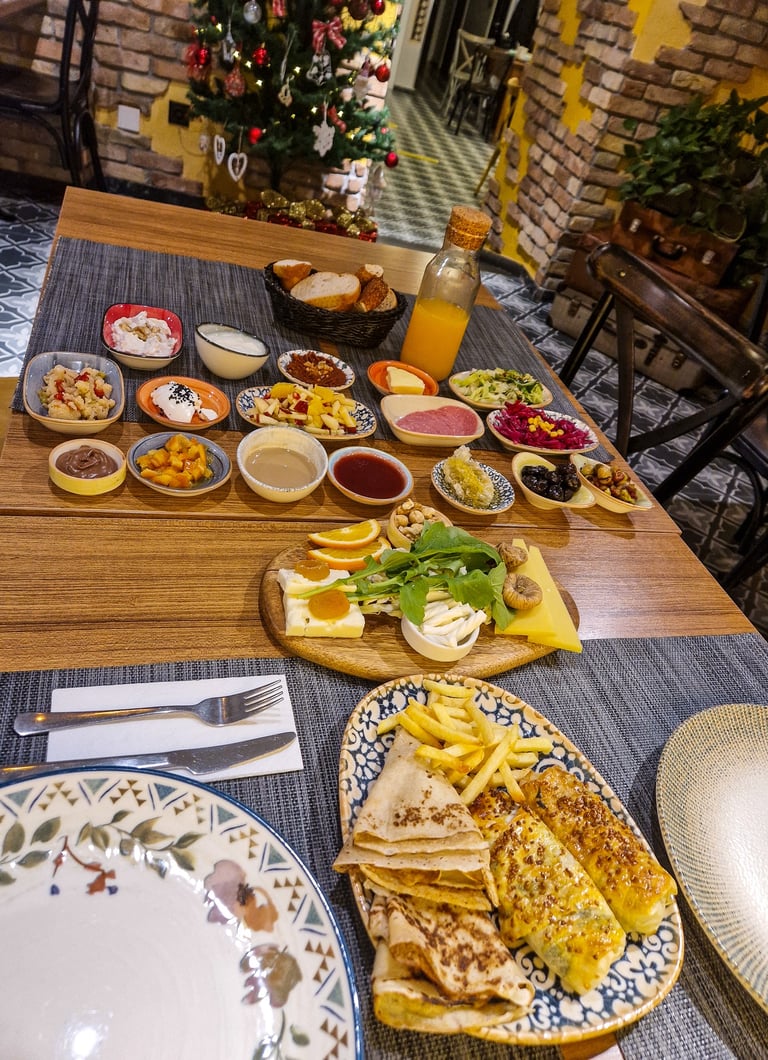

Where to stay
Due to the good public transport connections, you can stay in any of the mentioned neighbourhoods. We stayed at Hotel Poem, located in the Sultanahmet district, so we were close to the main attractions. We highly recommend this hotel. It’s a bit more expensive, but the location, the staff, the comfortable rooms, and the royal breakfast that you can almost survive on the entire day make it definitely worth it. The next time we’re in Istanbul, we will consider staying in the Karaköy and Üsküdar as these are also perfectly located for easy movement between the different parts of the city.
